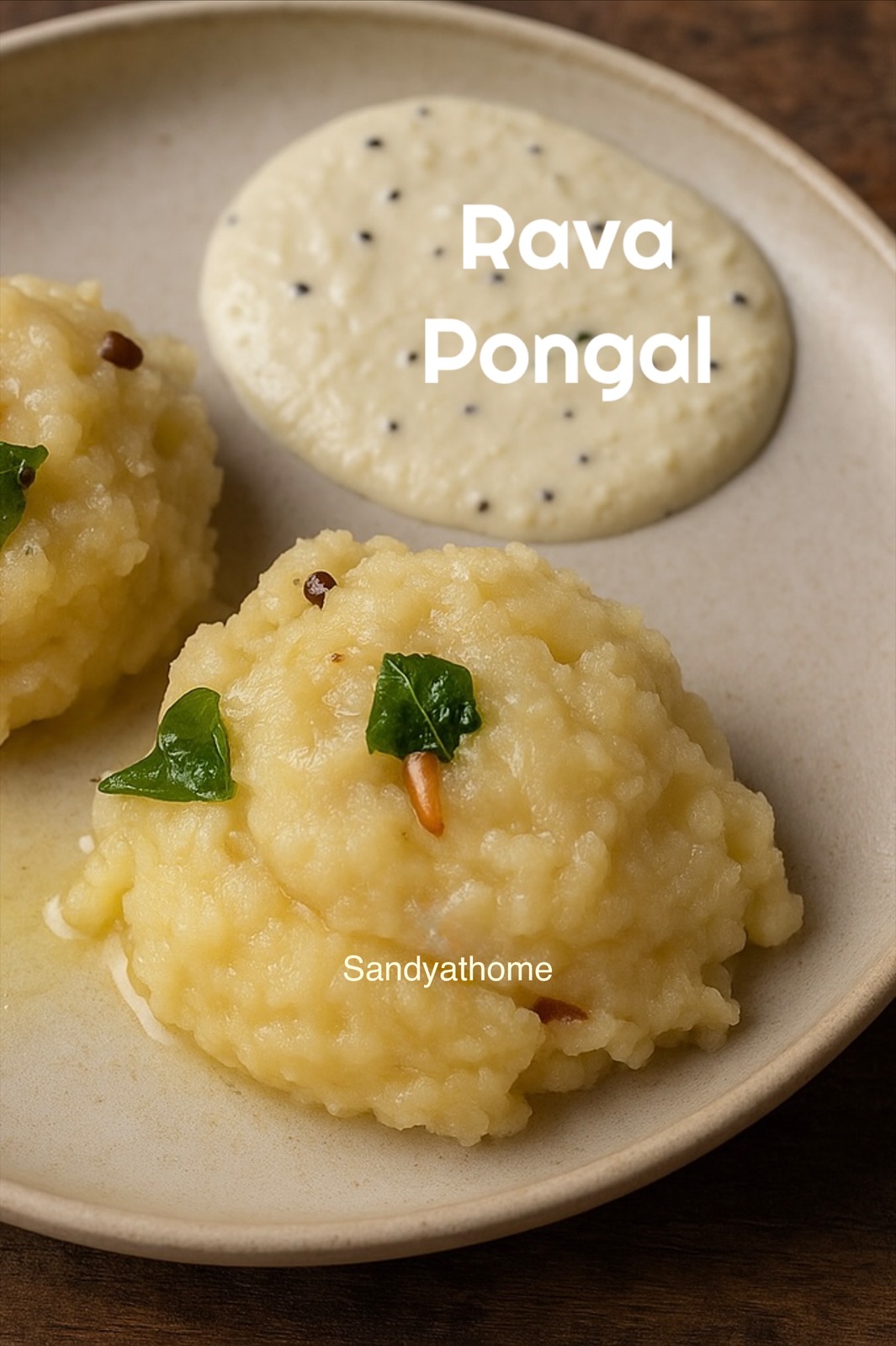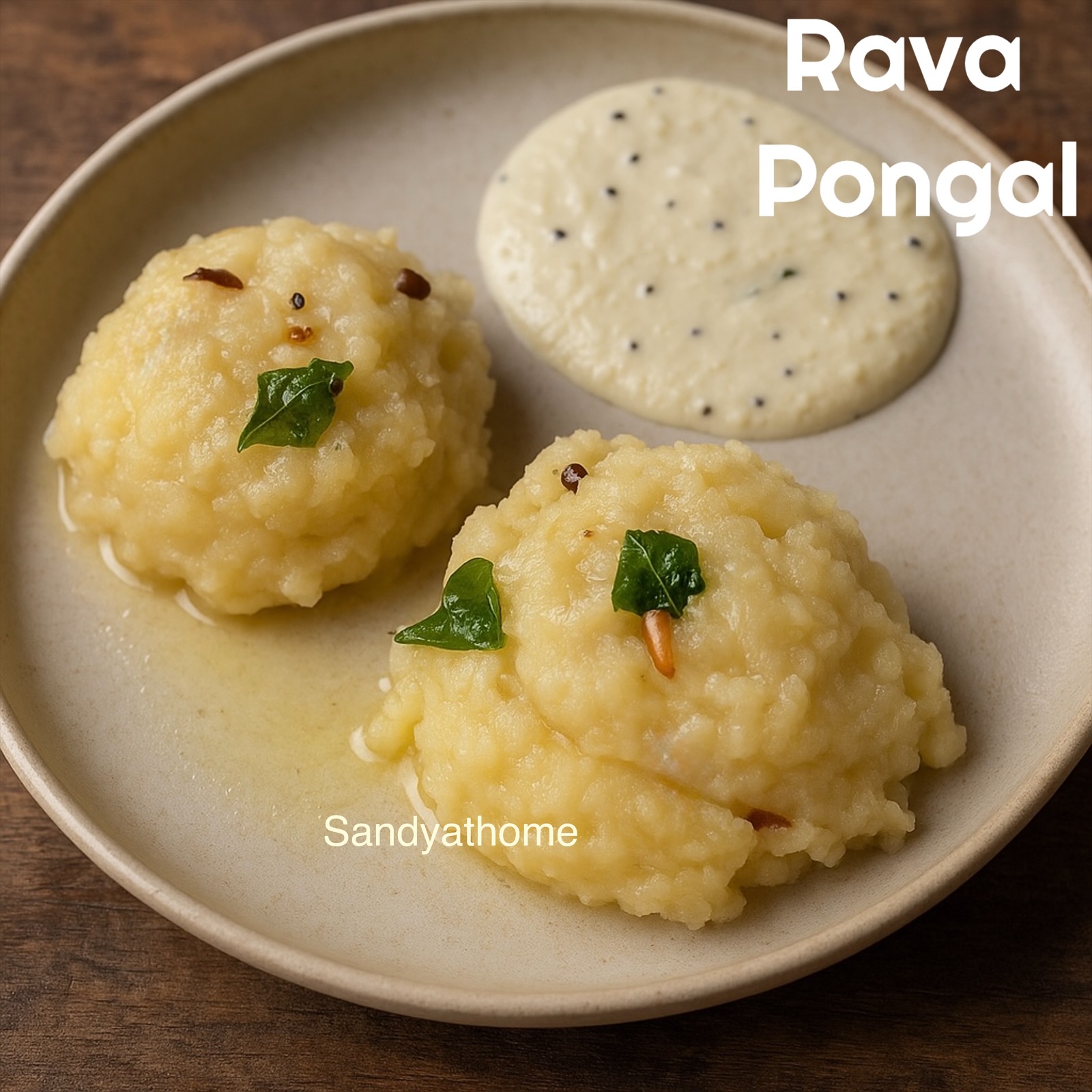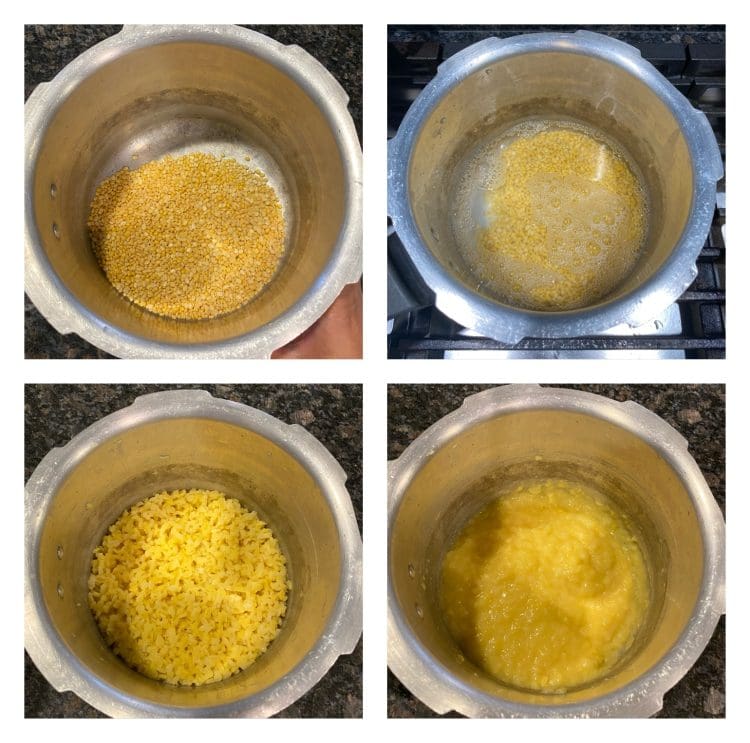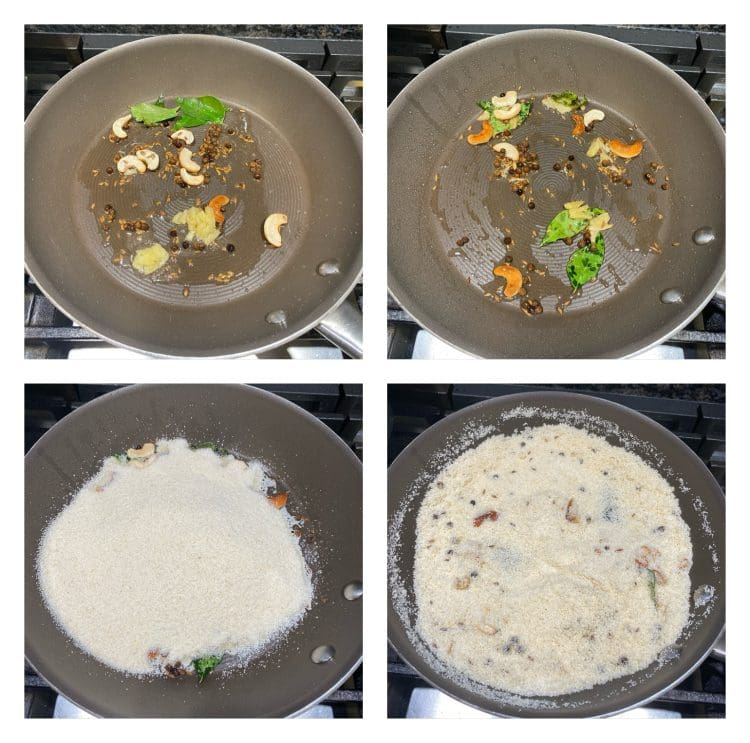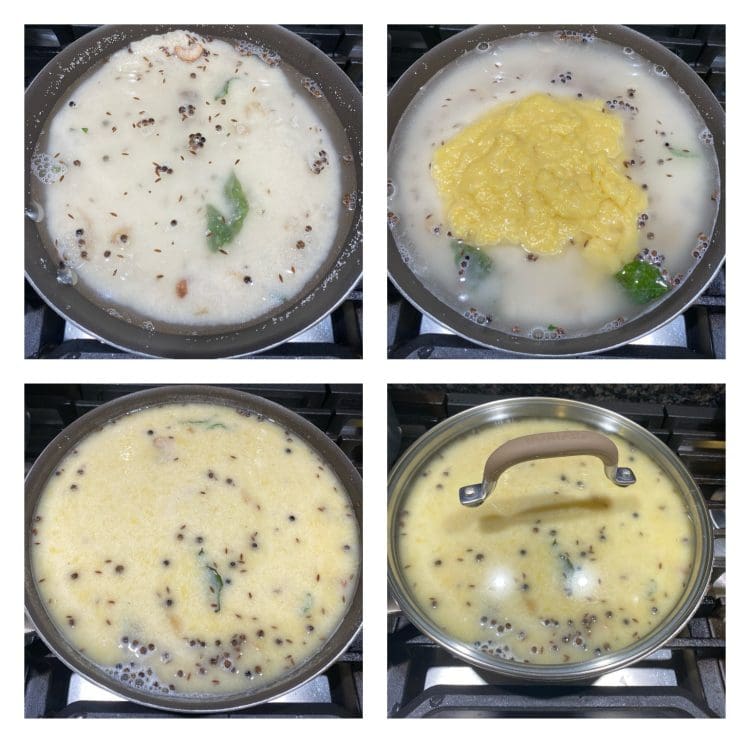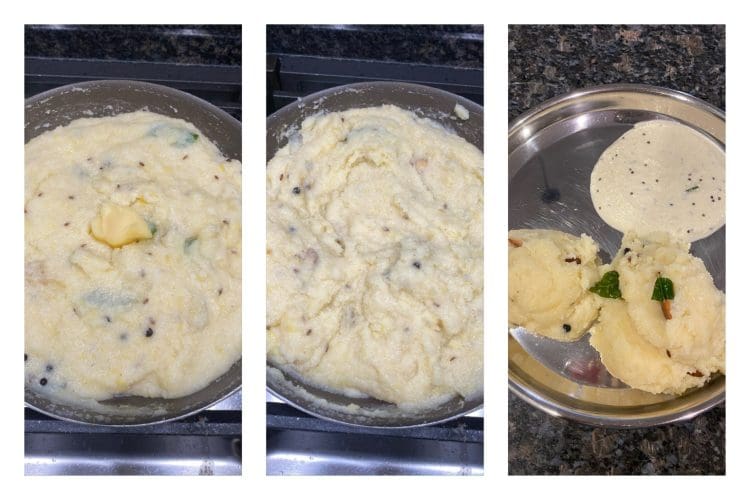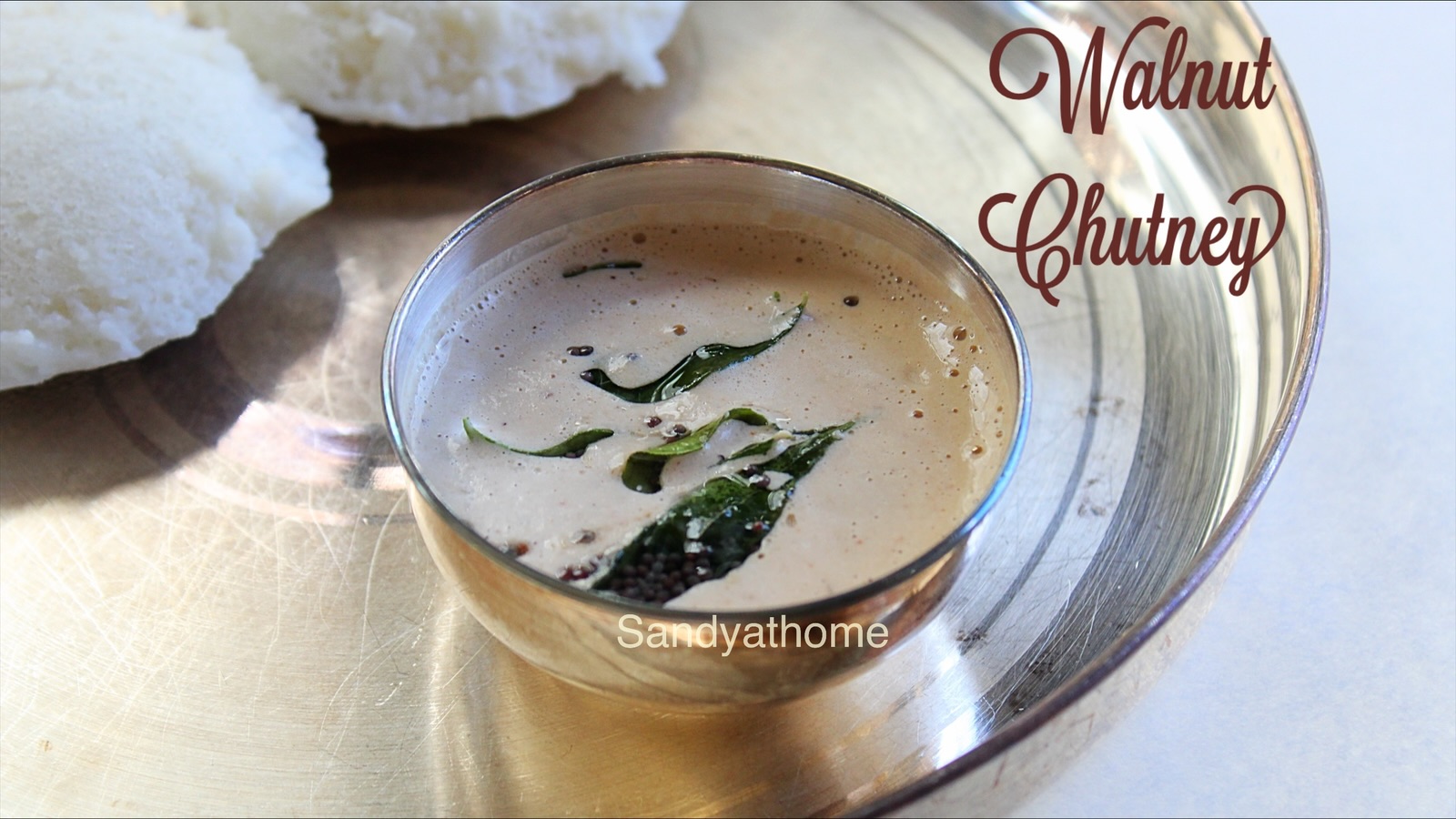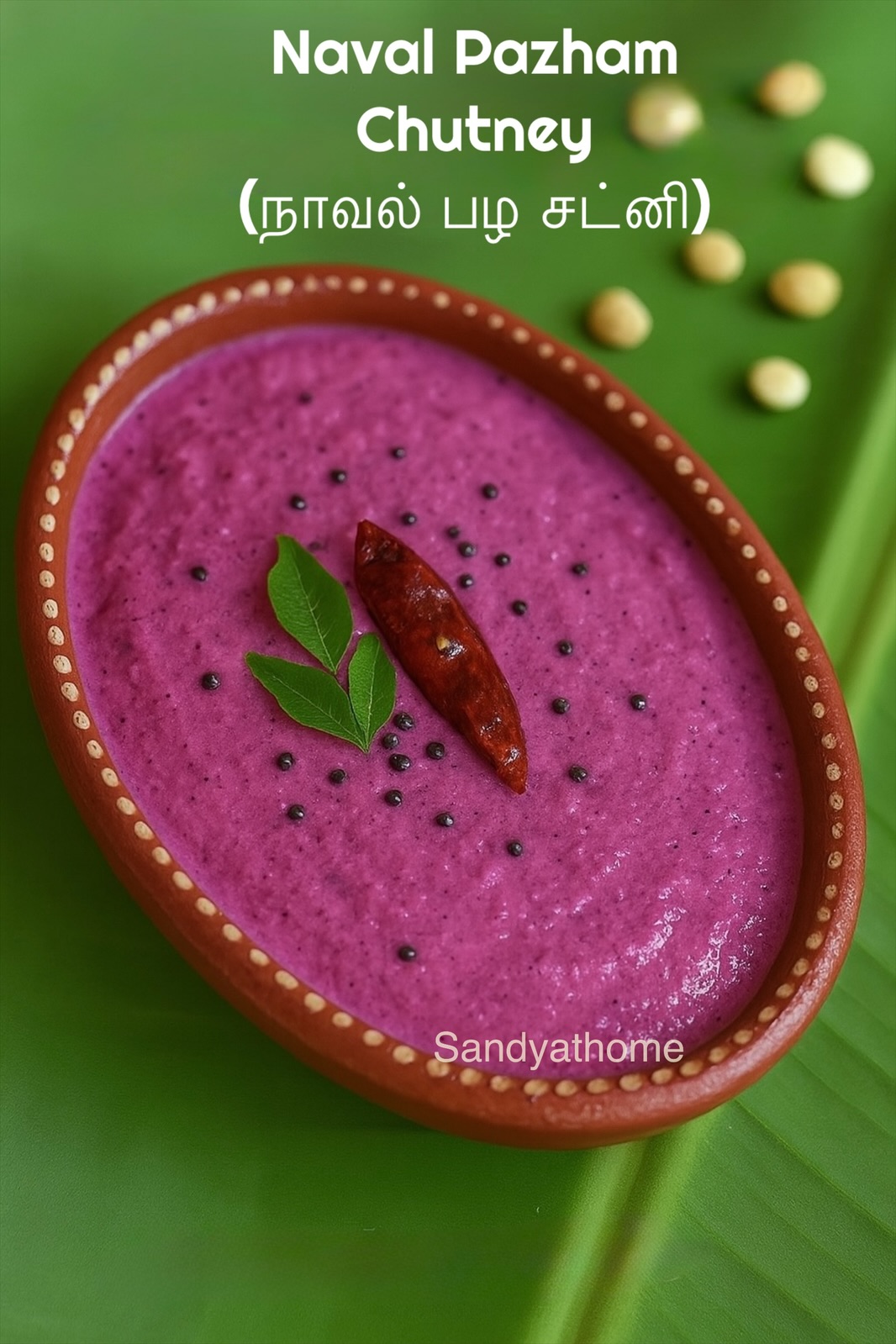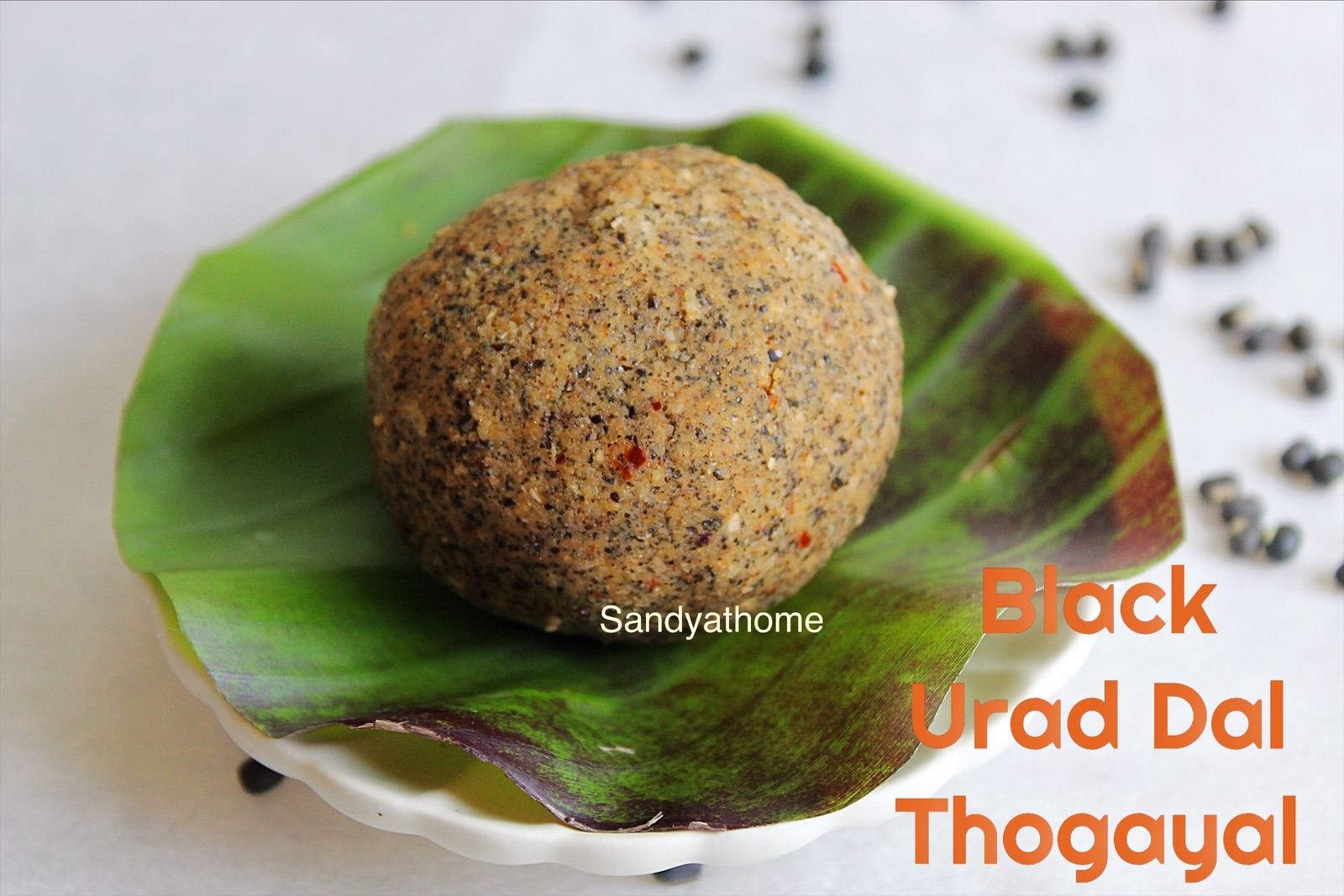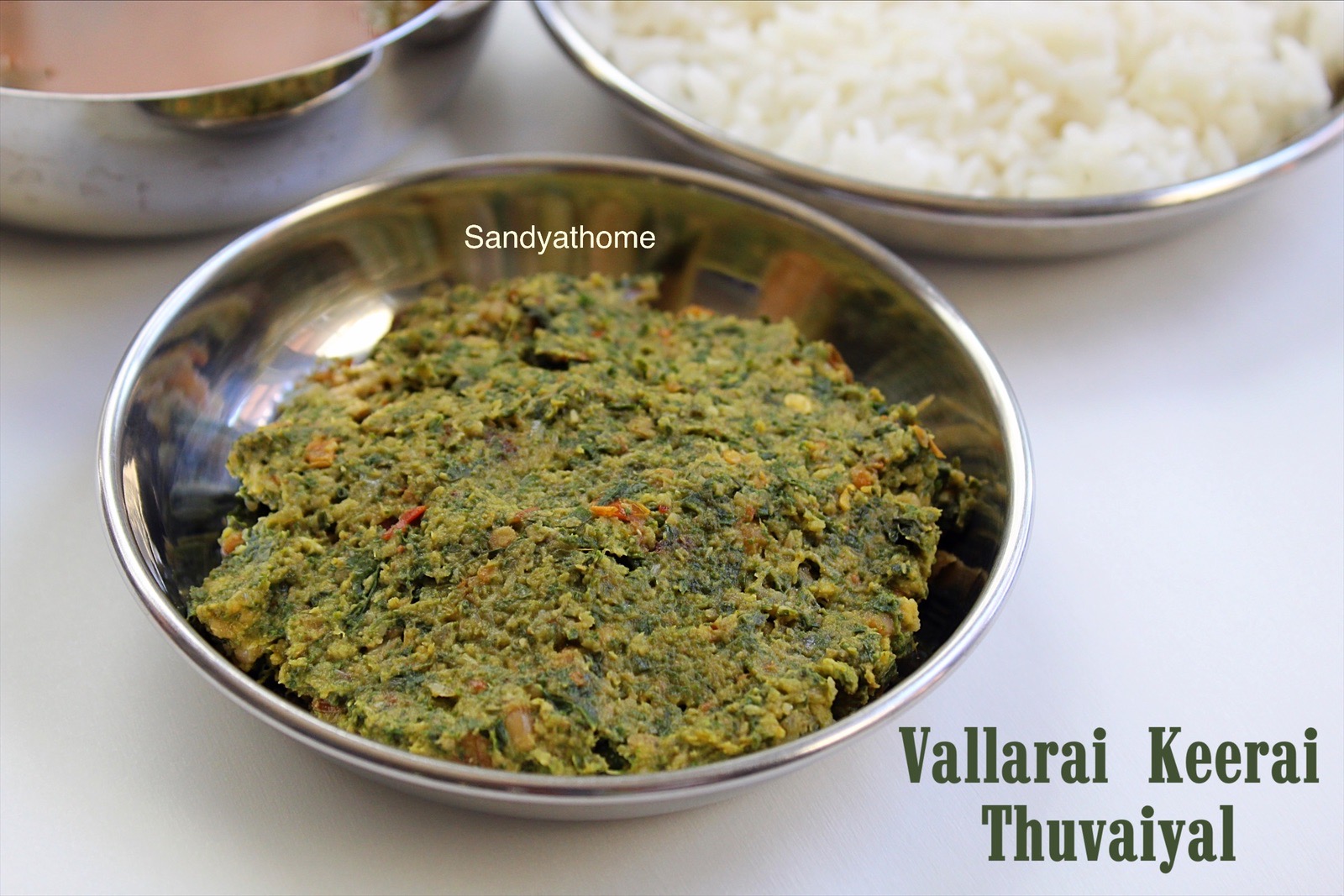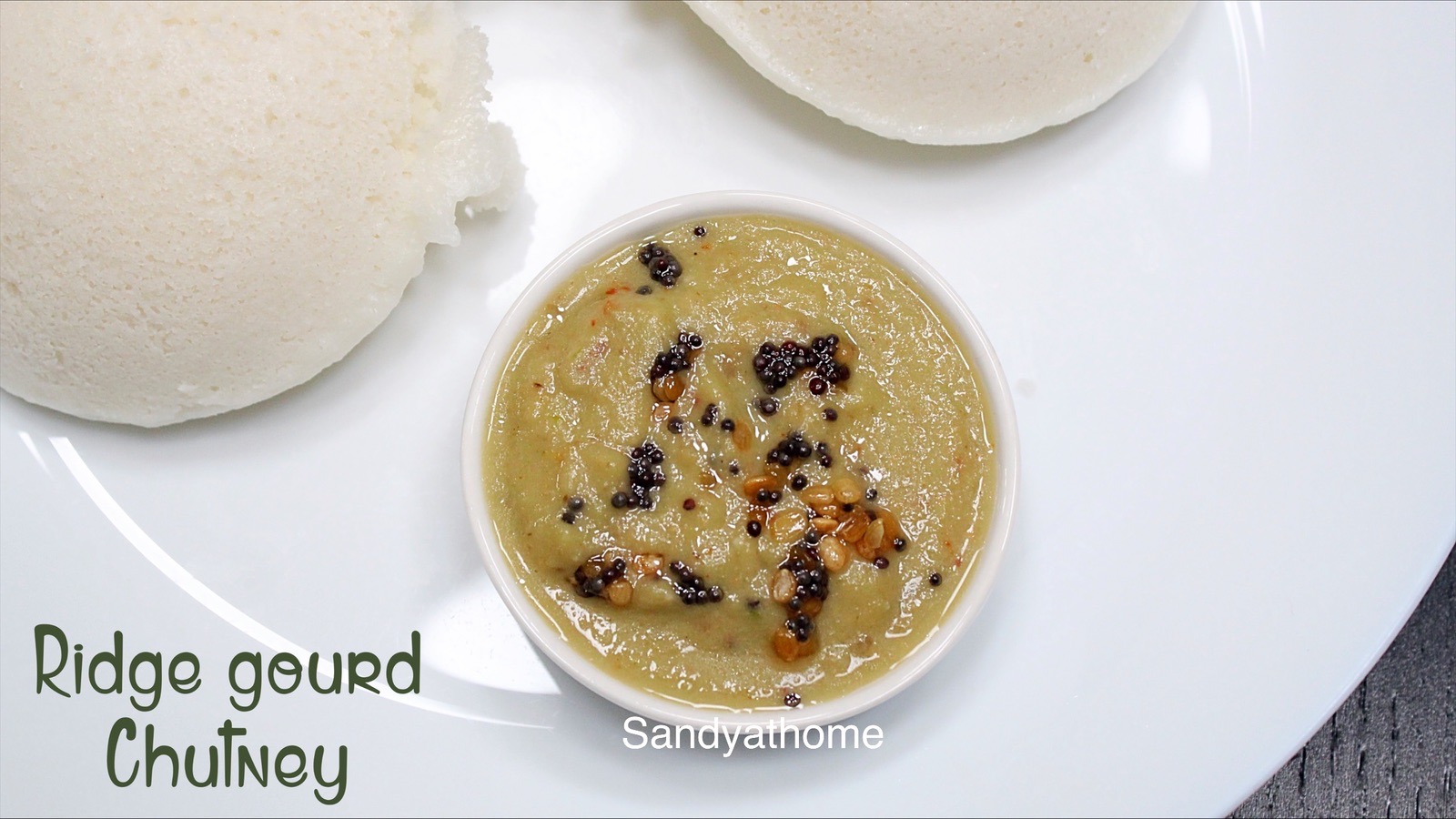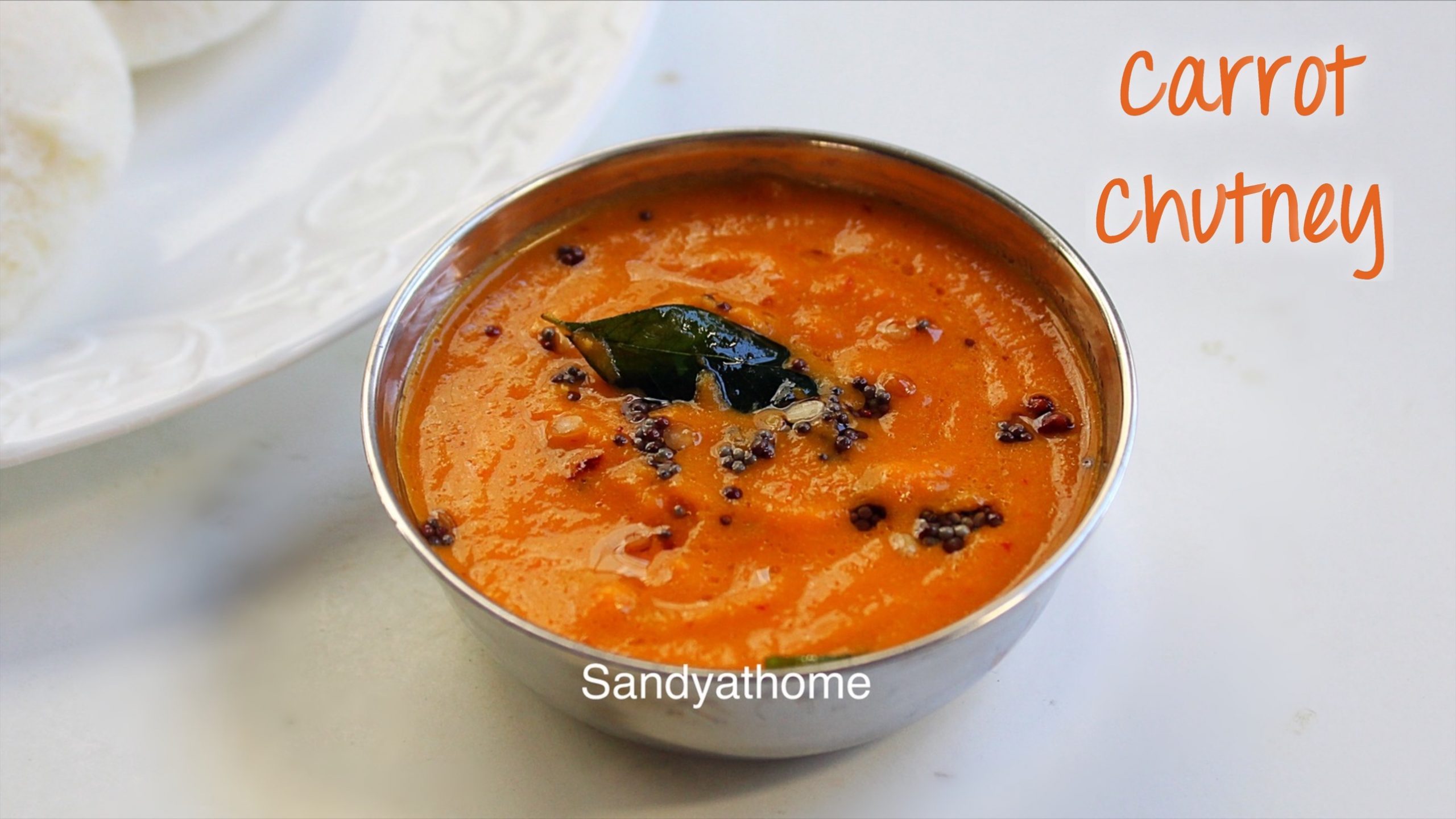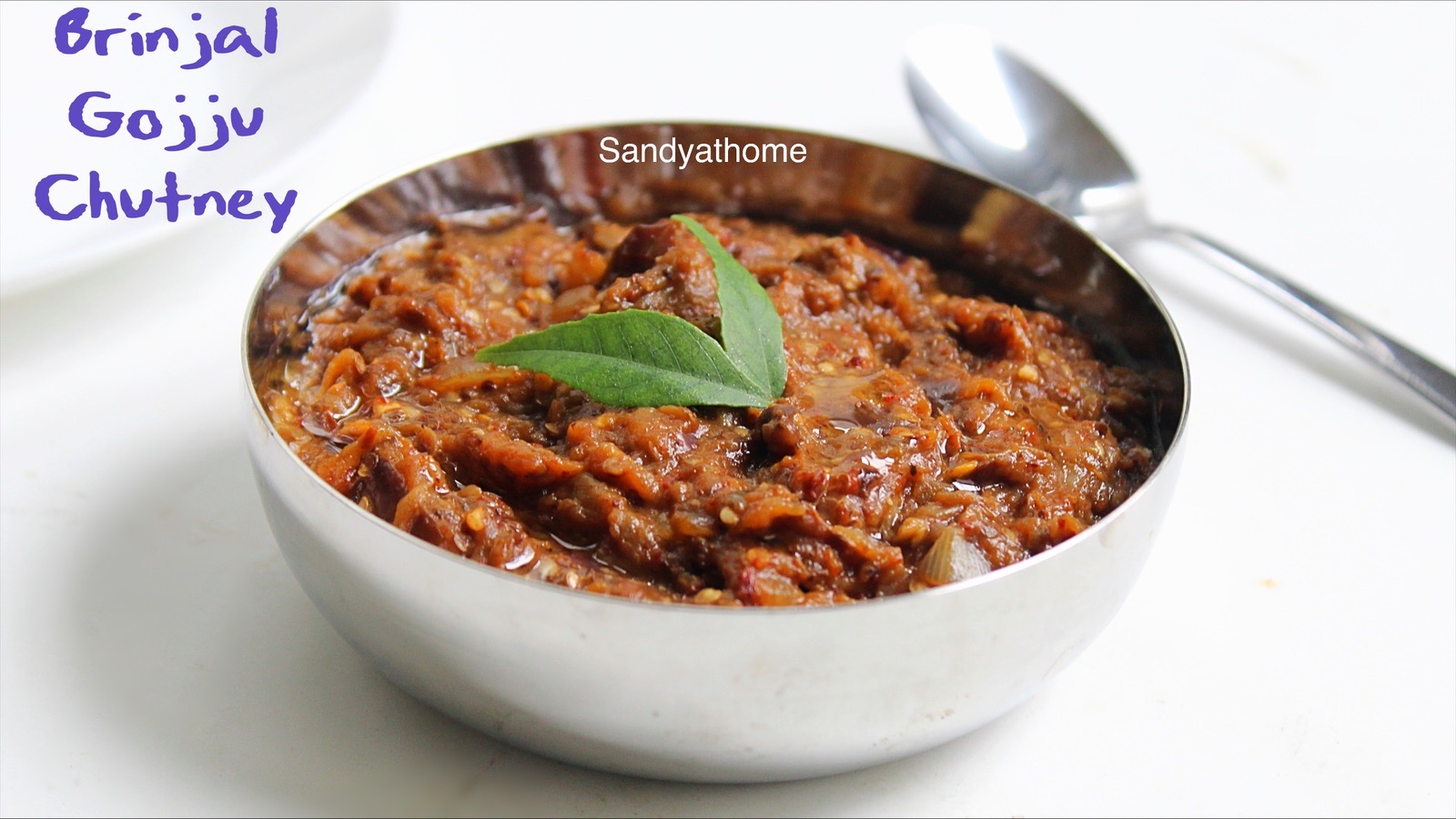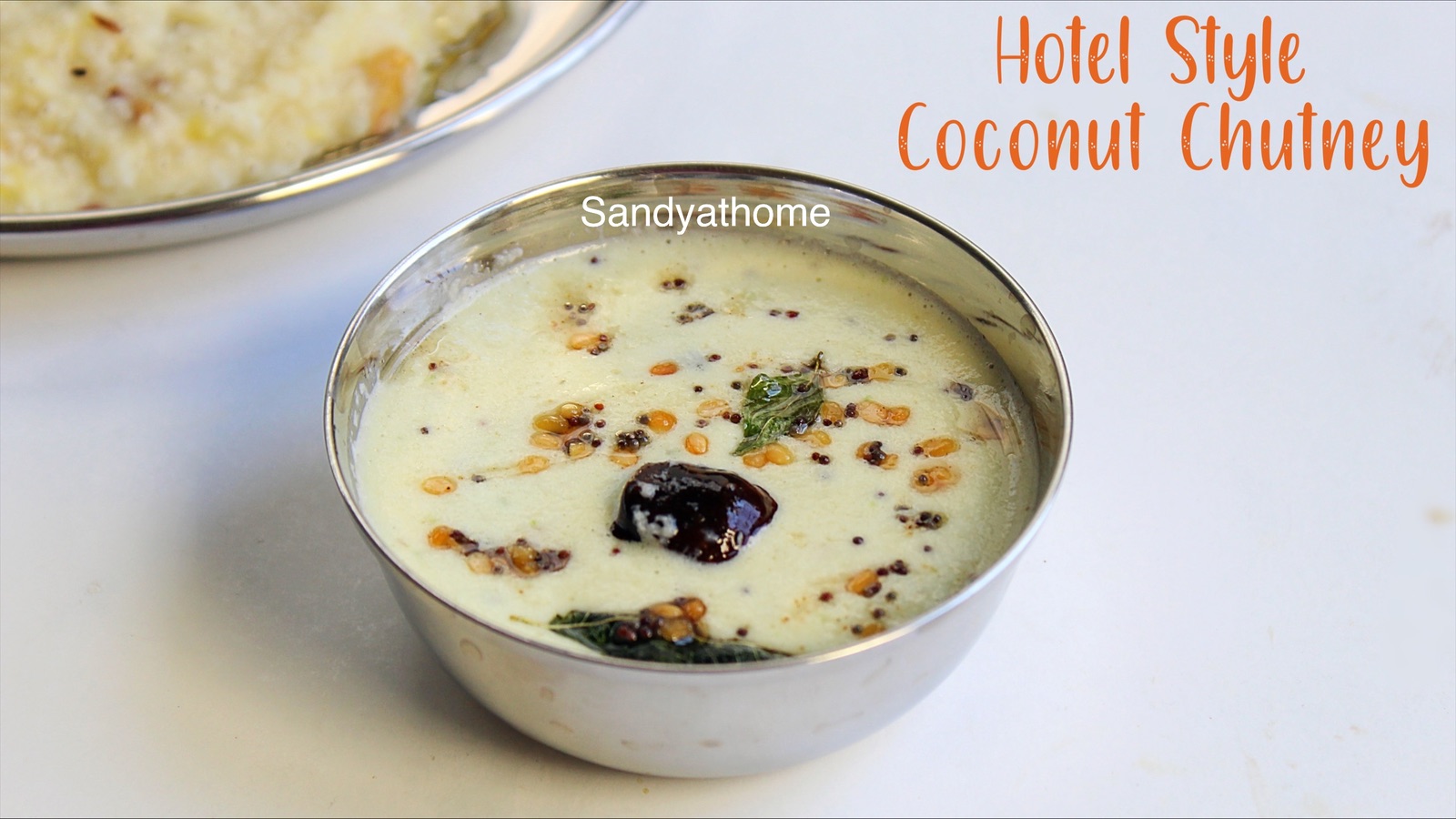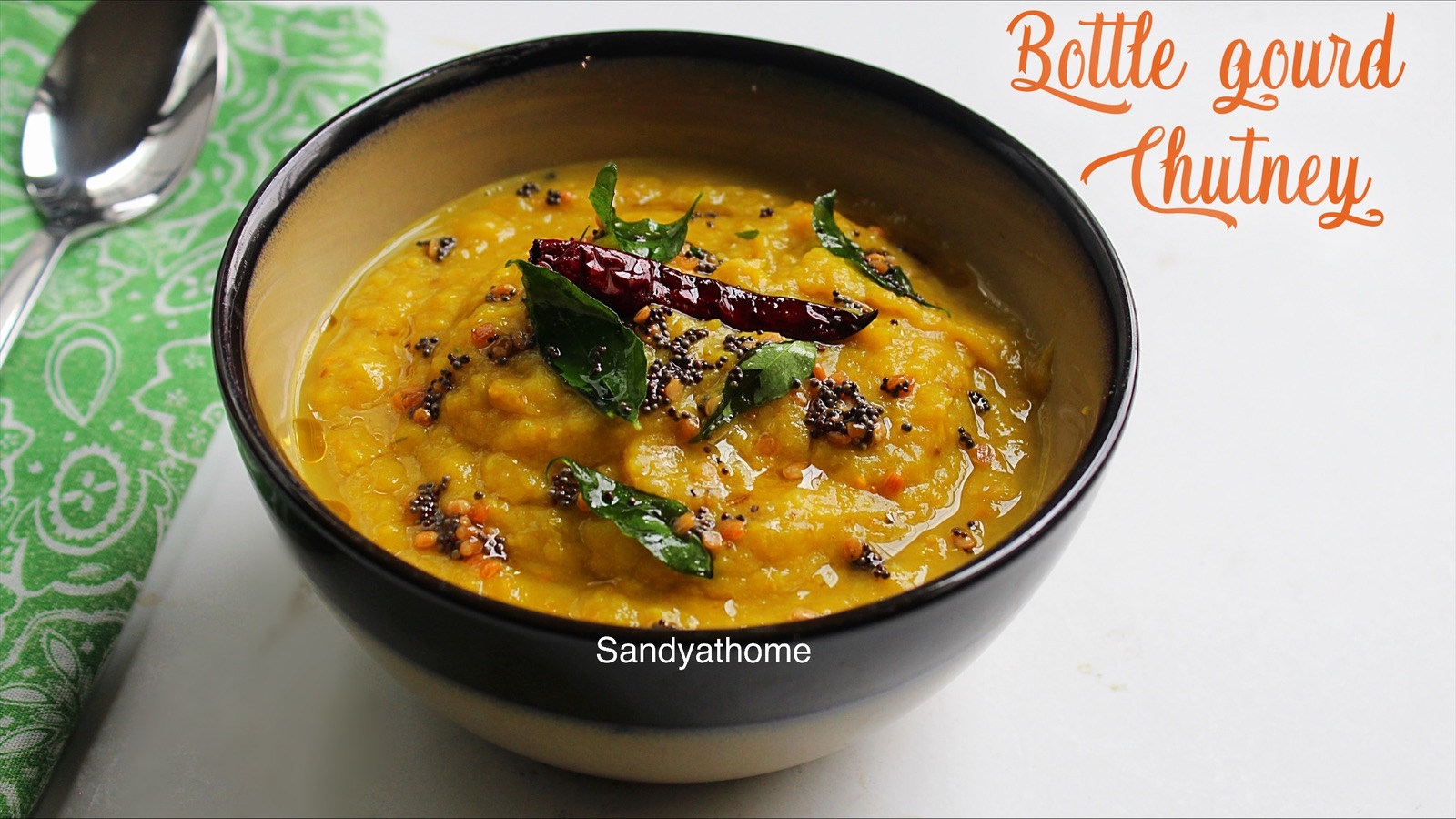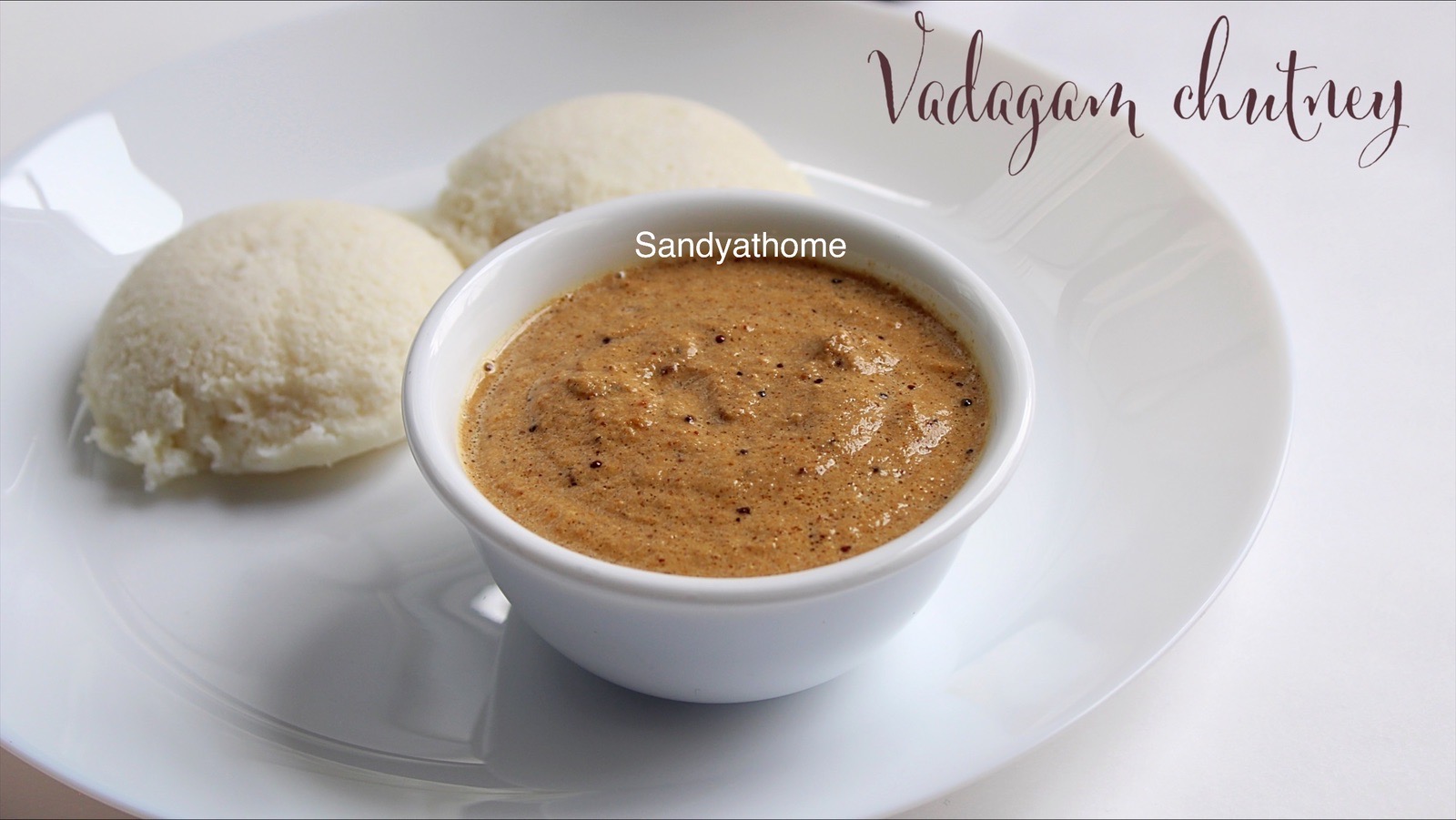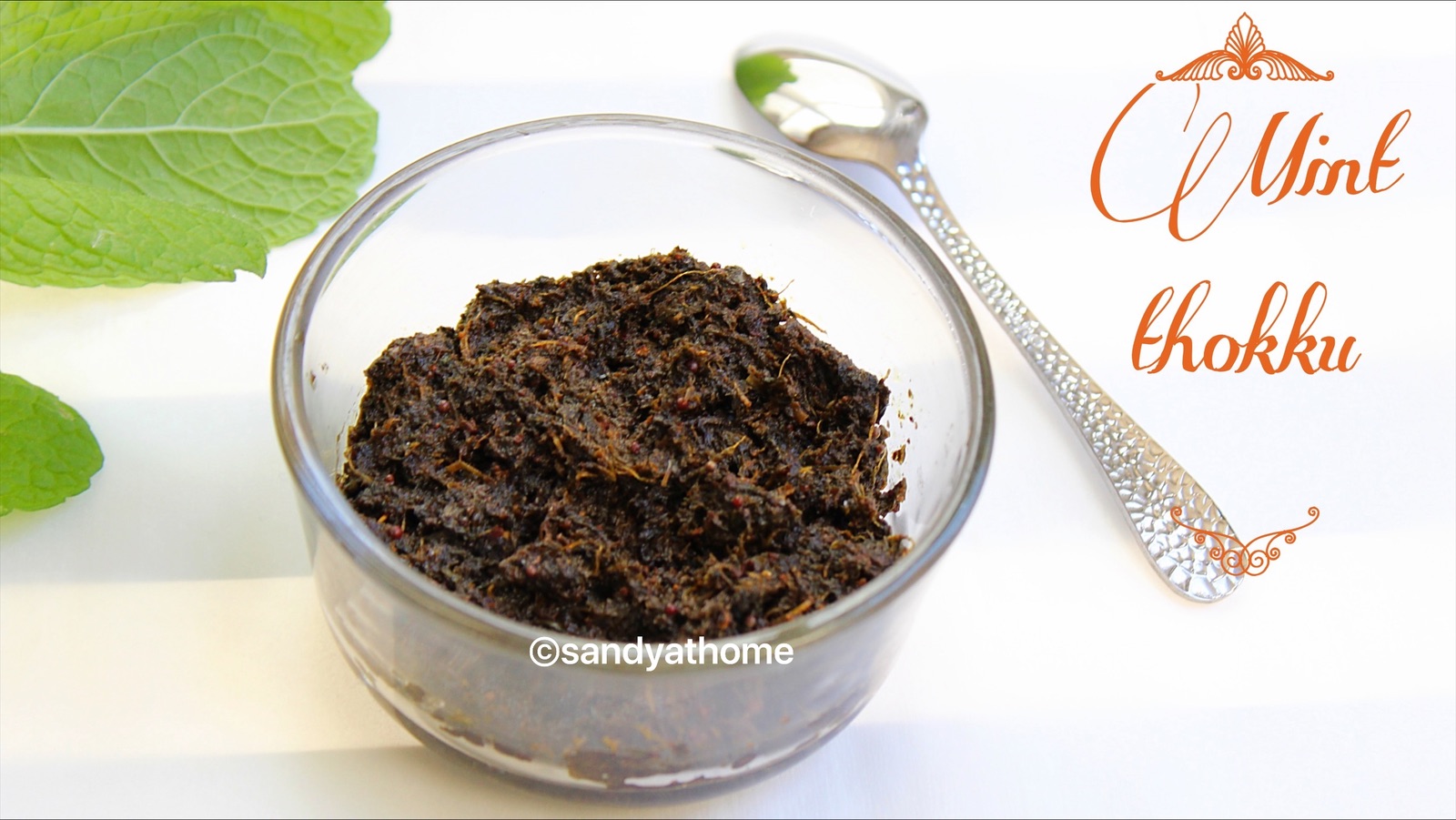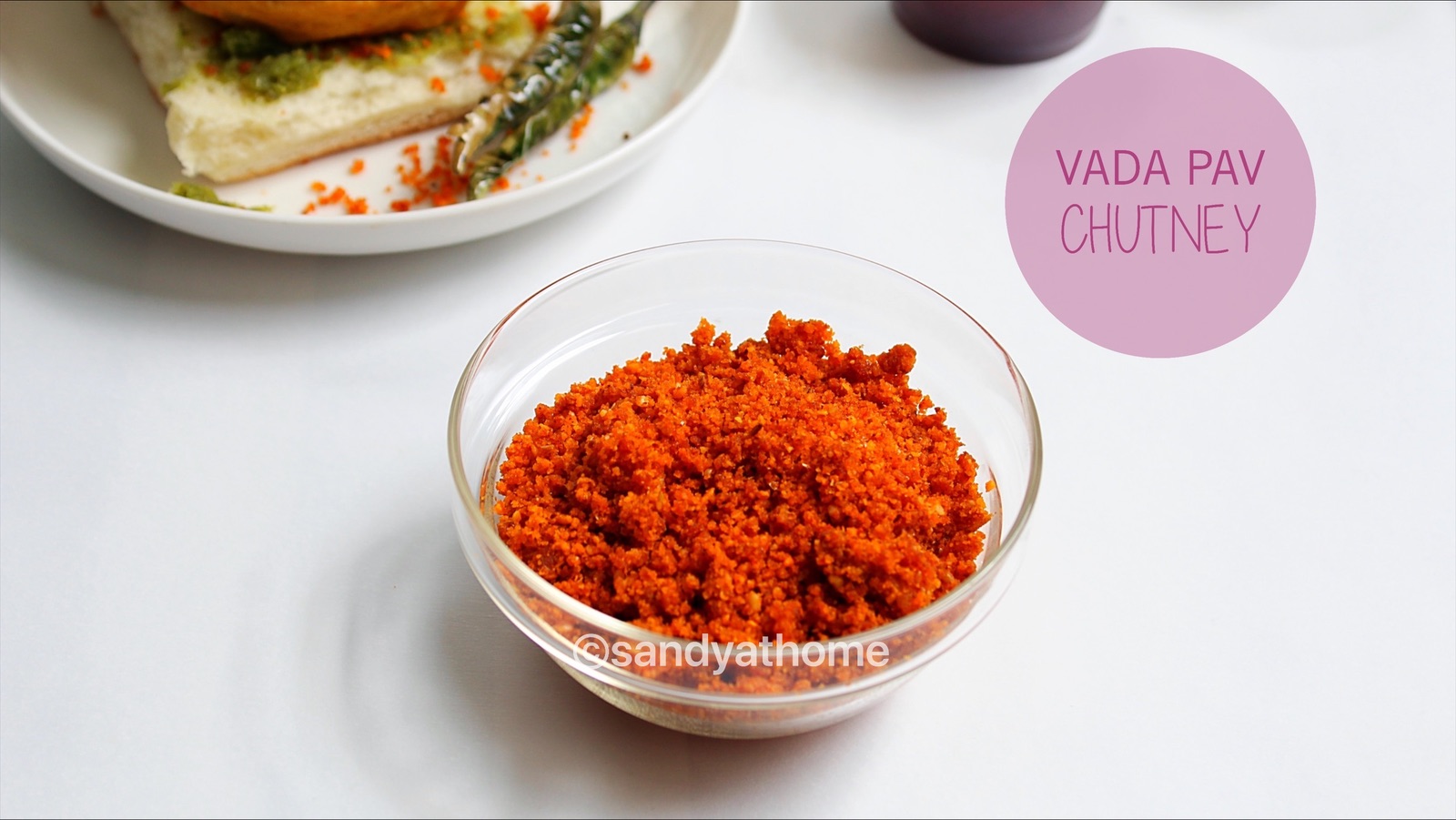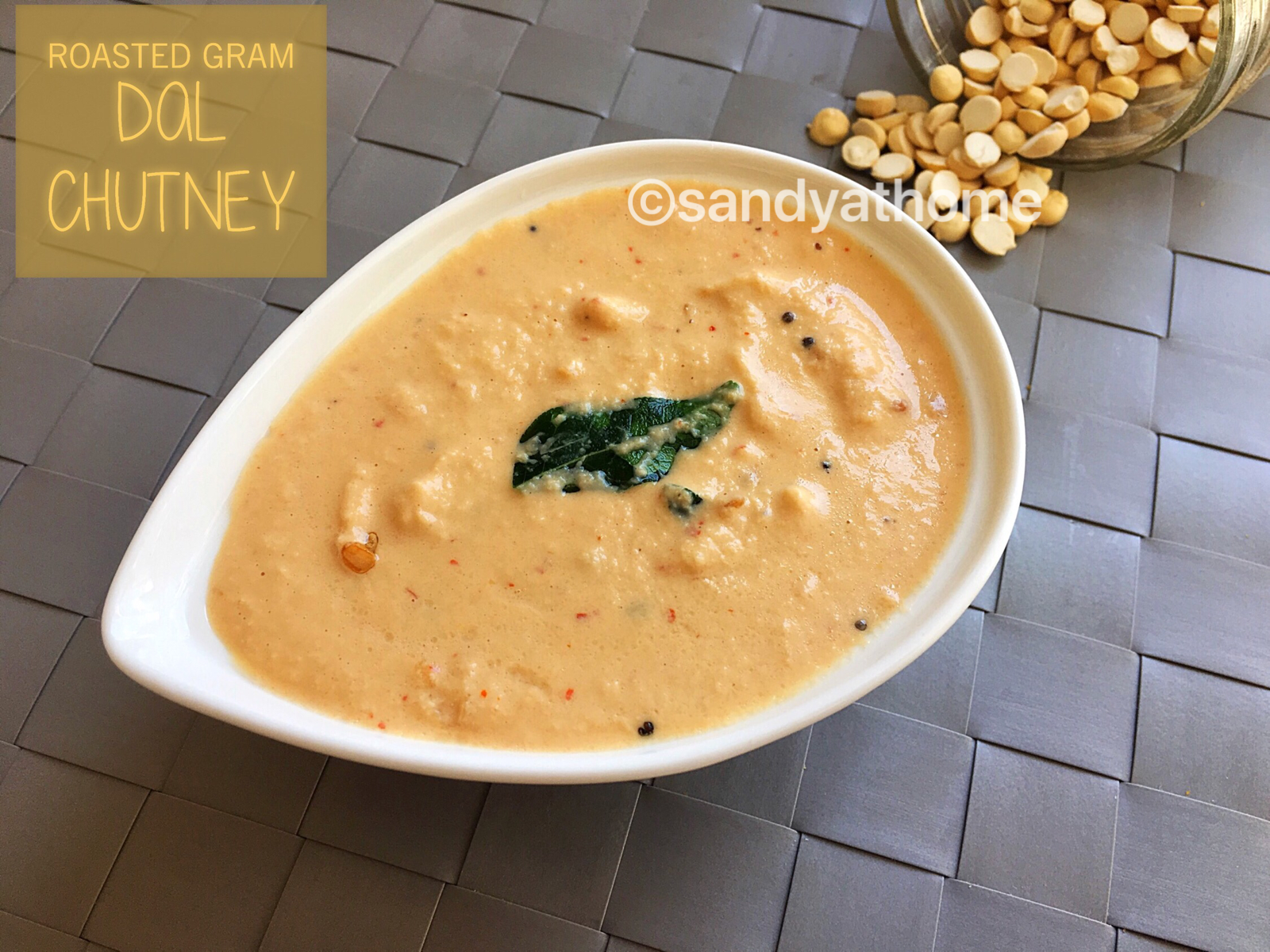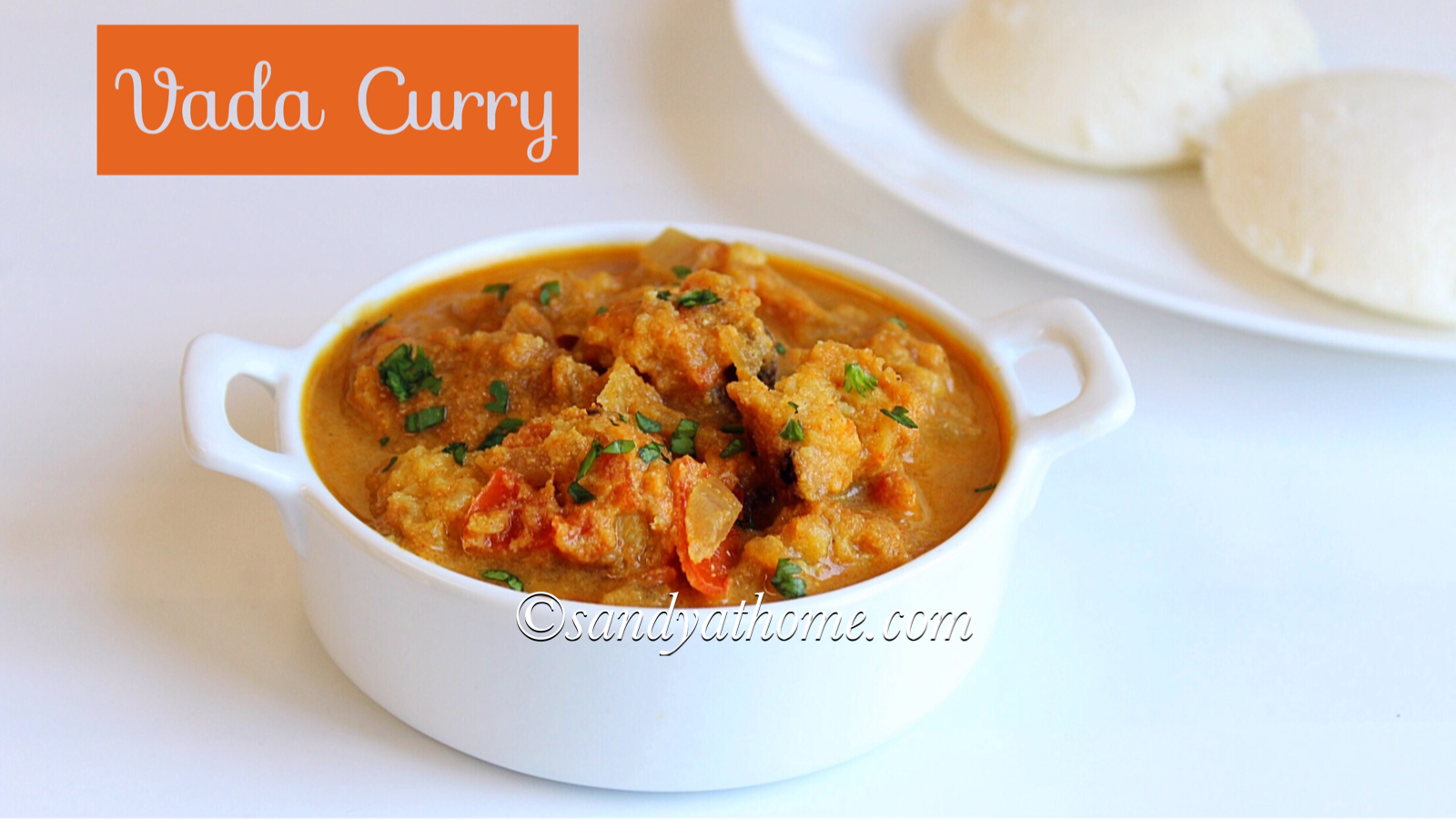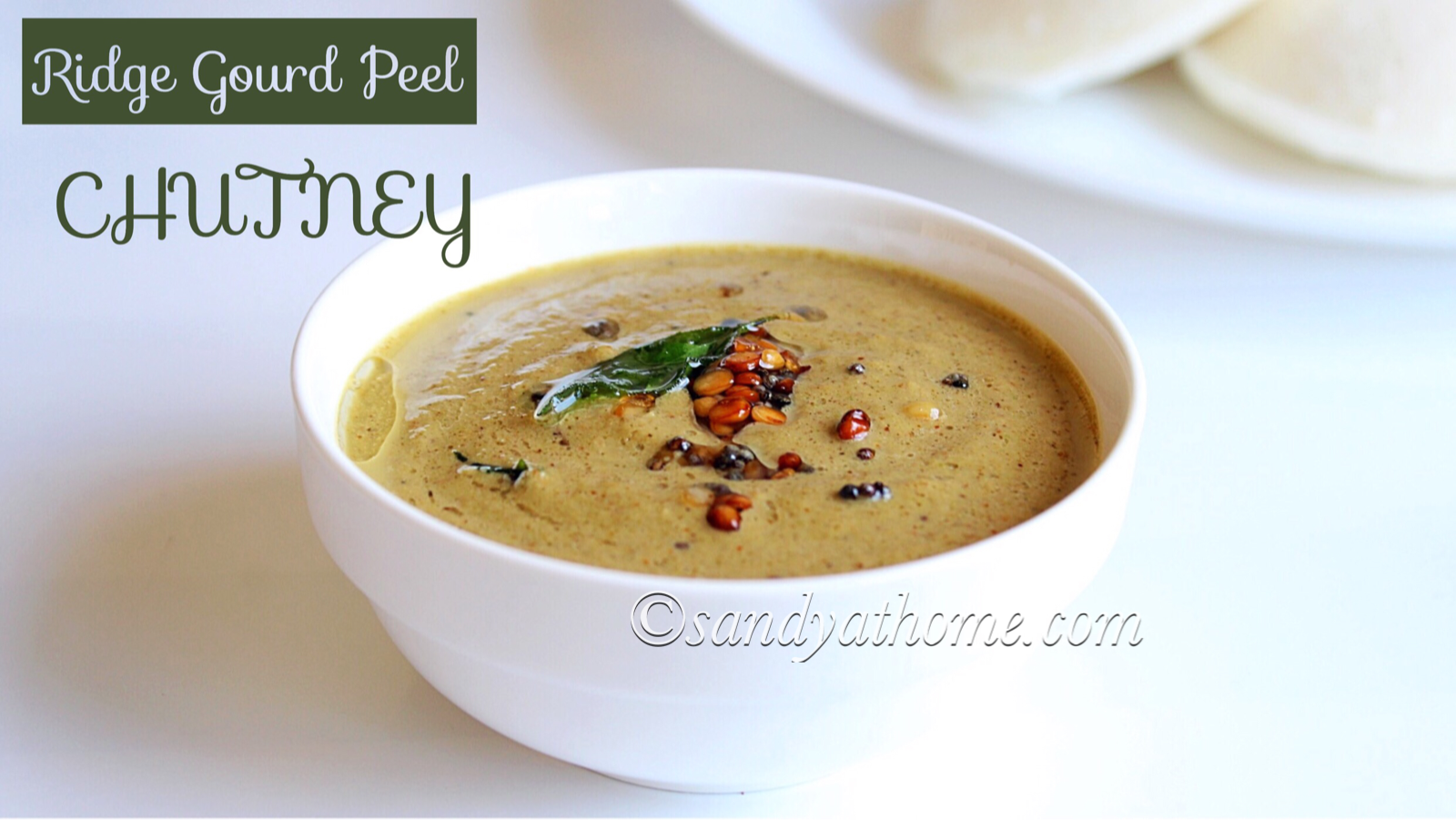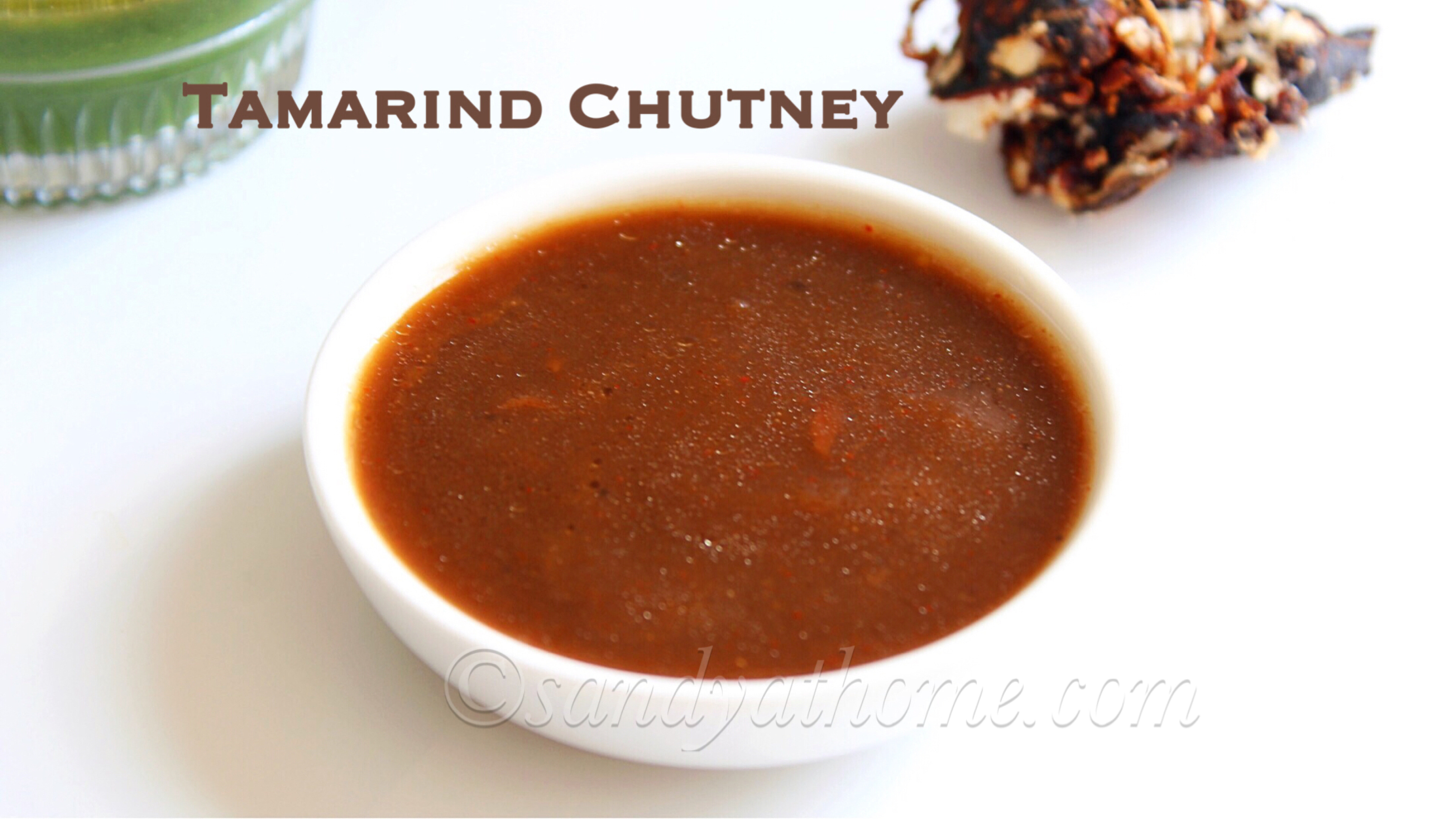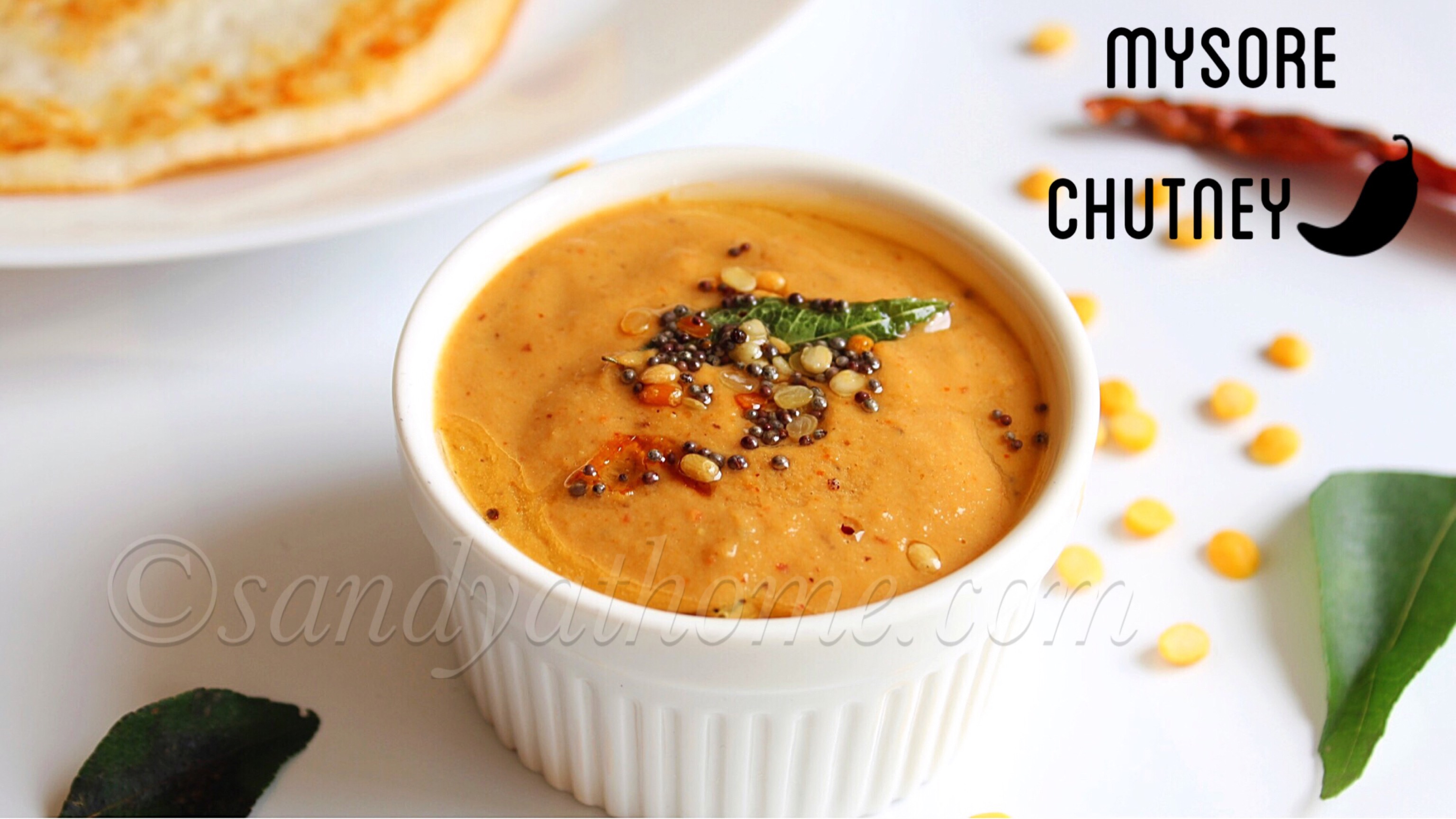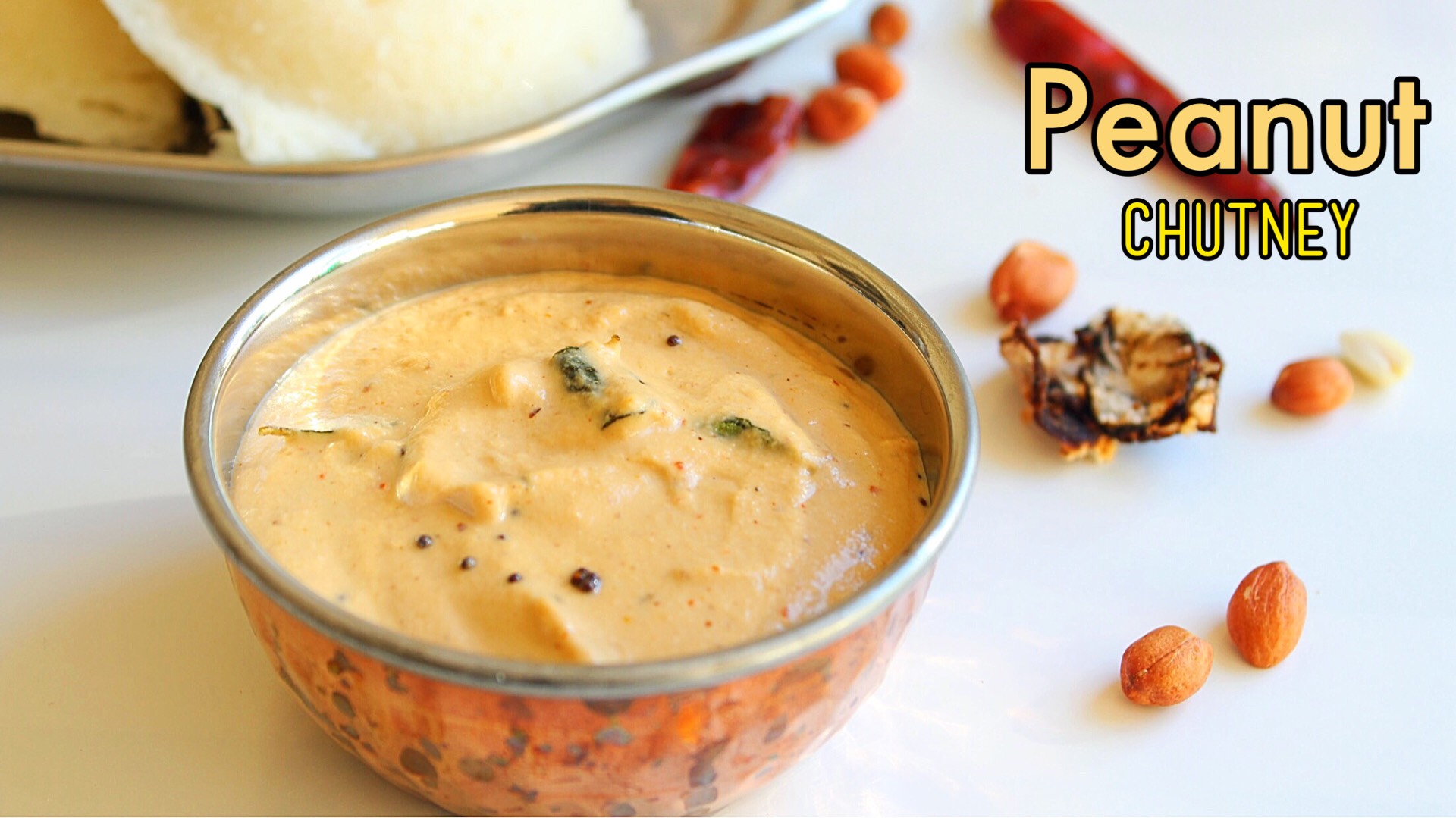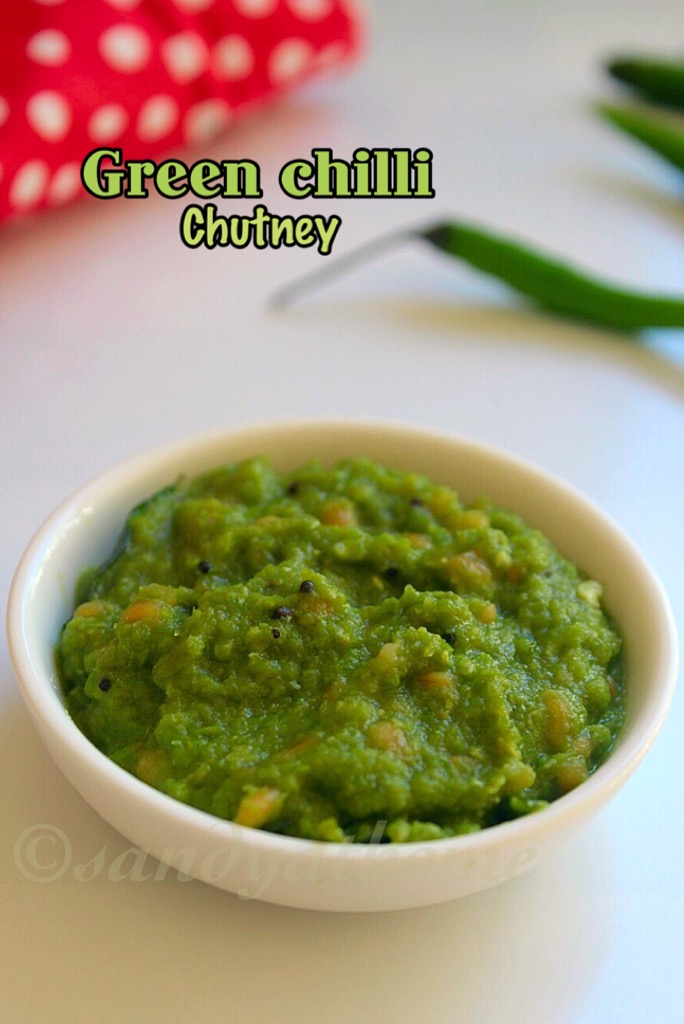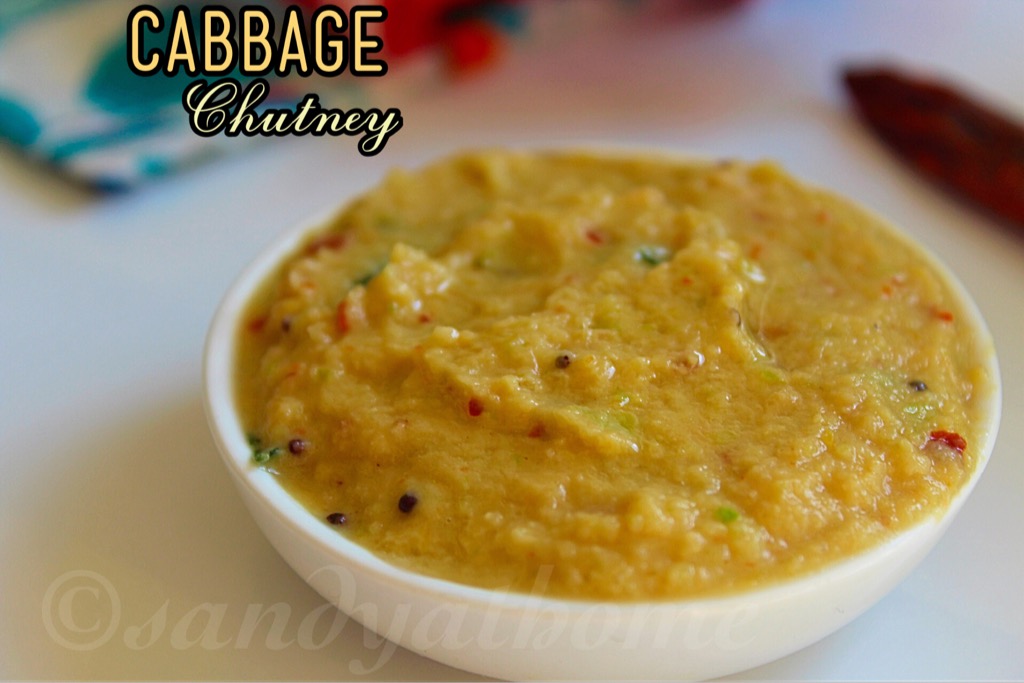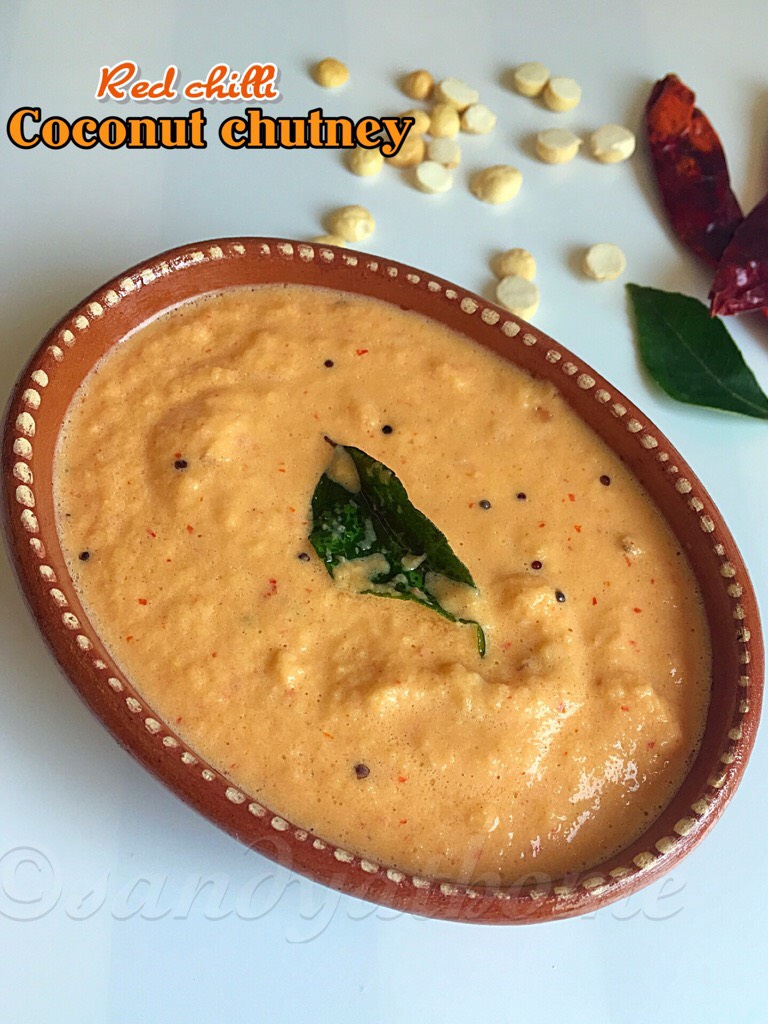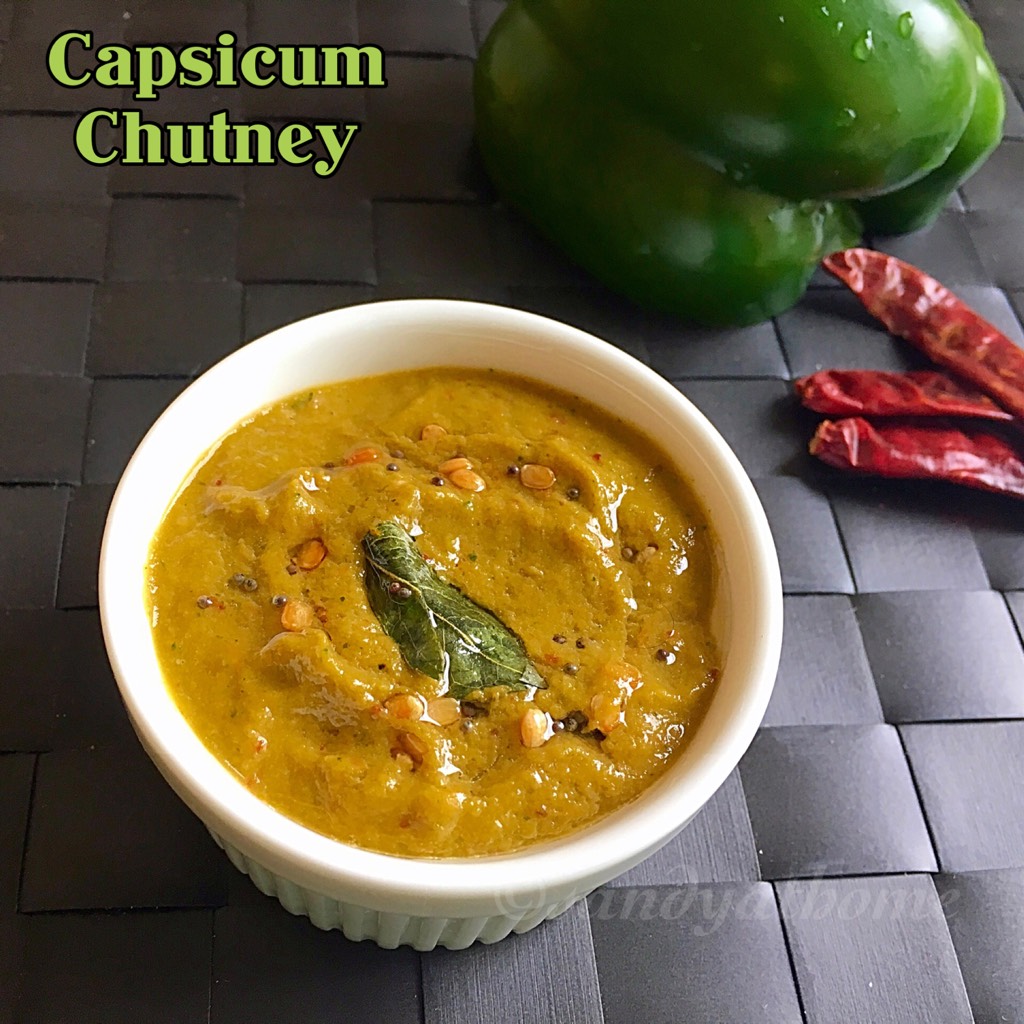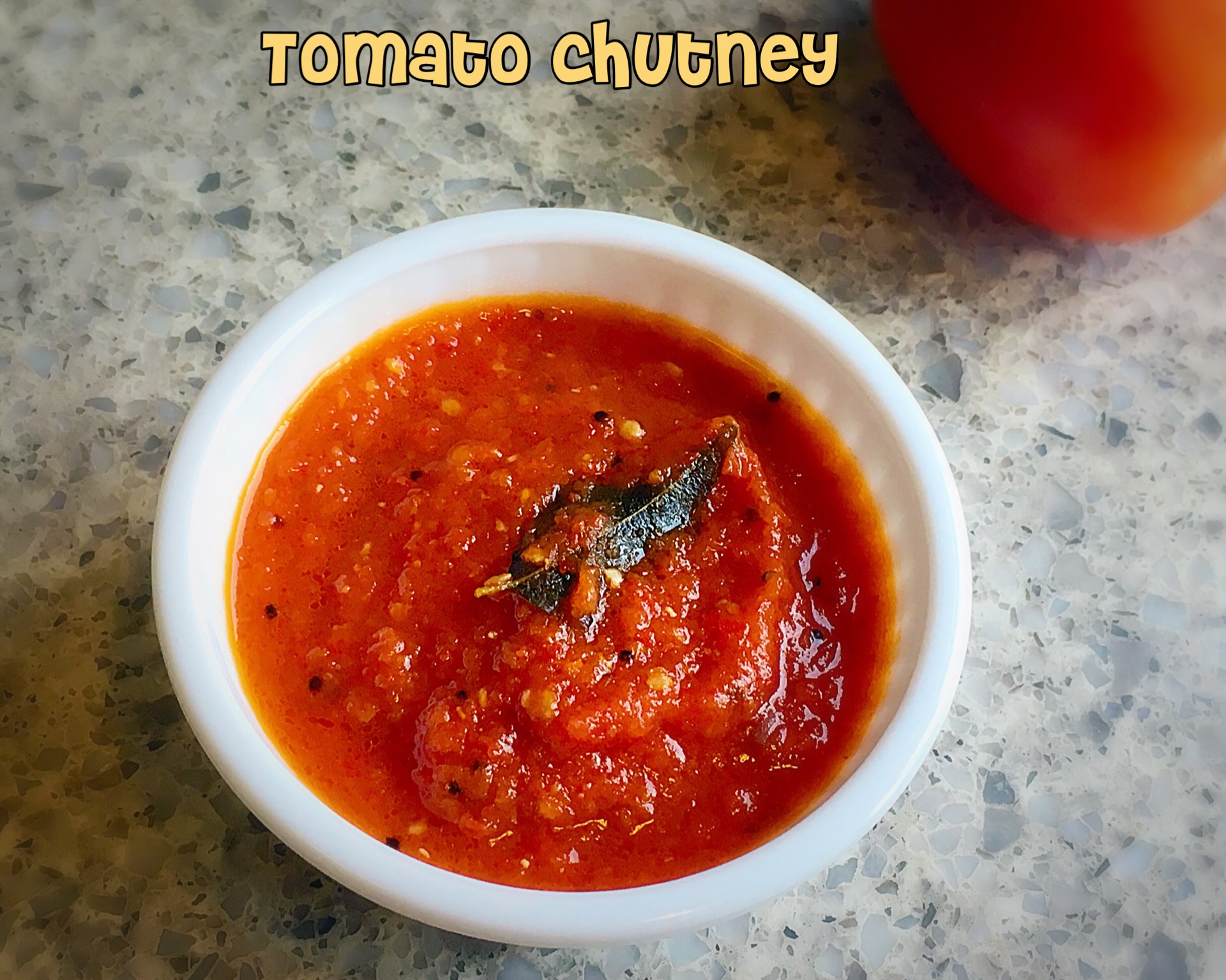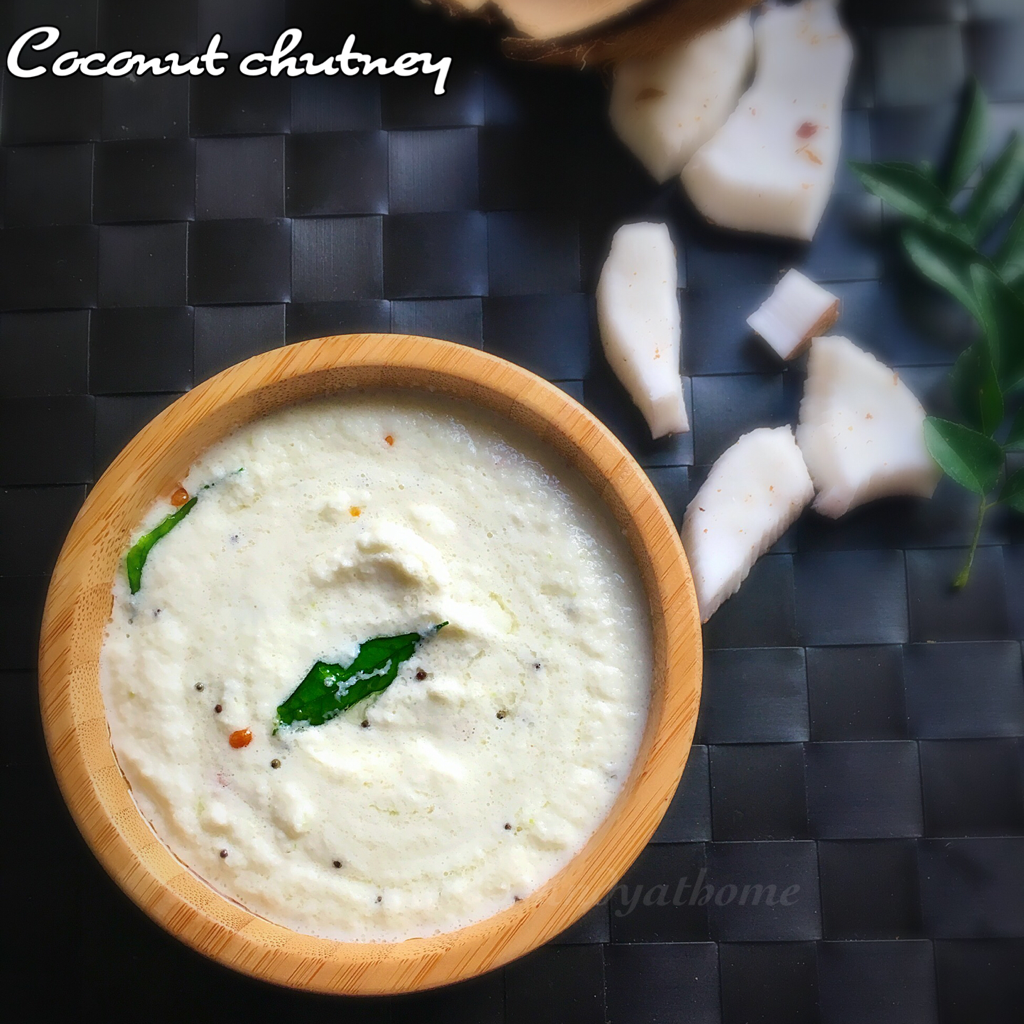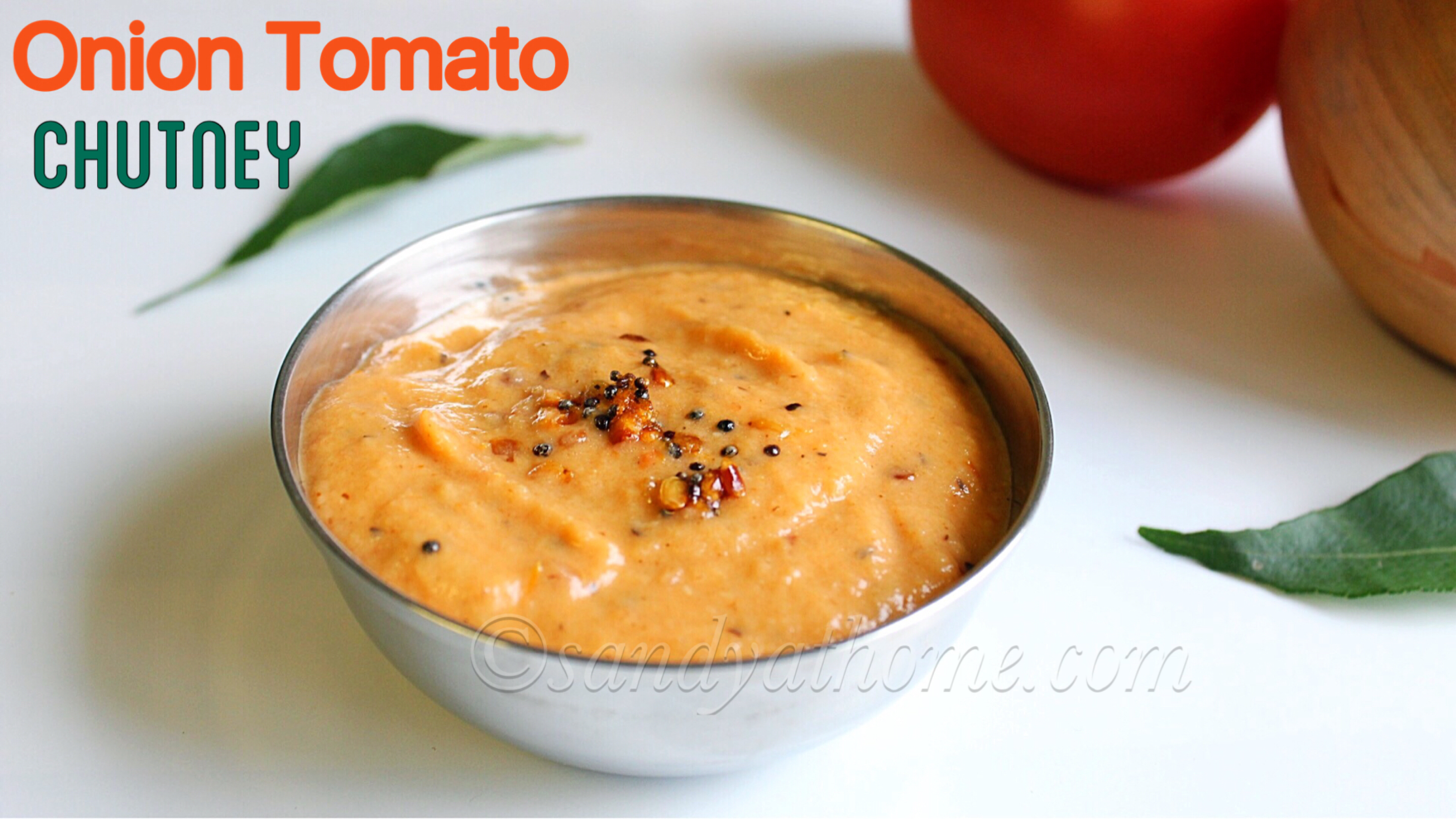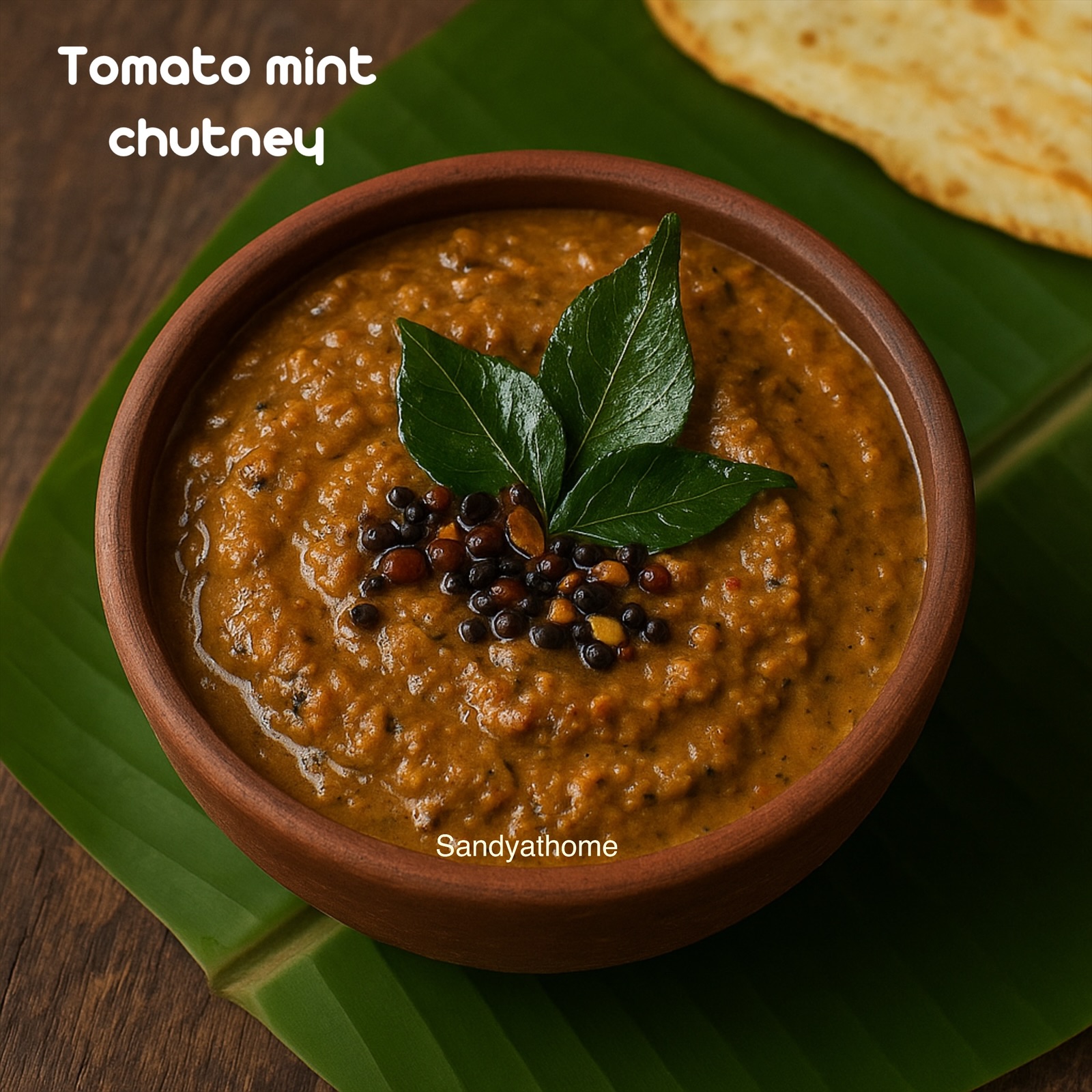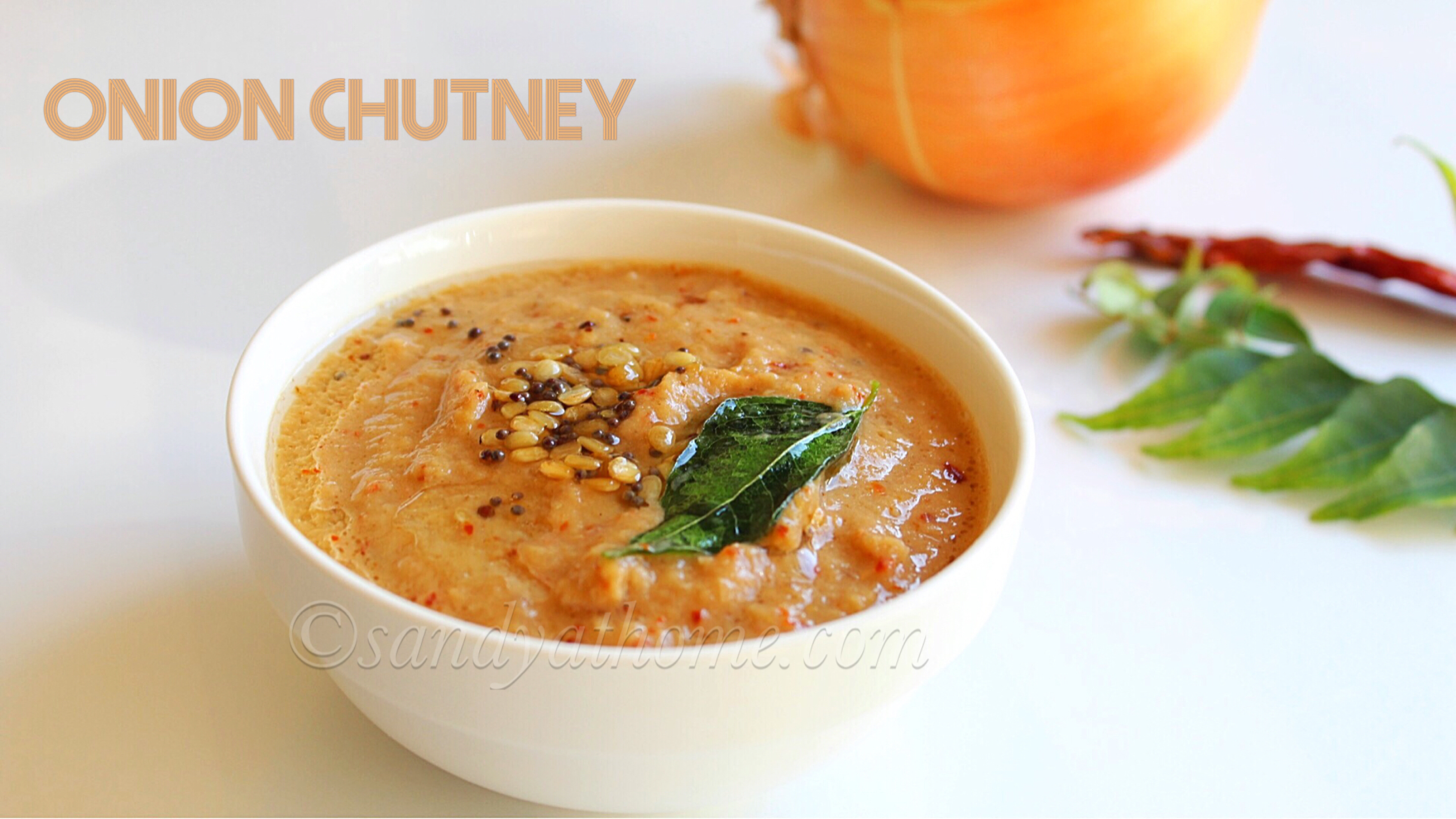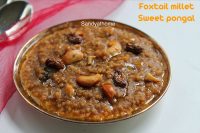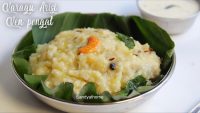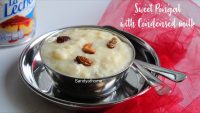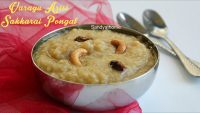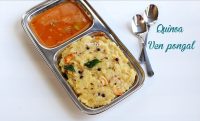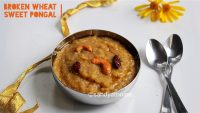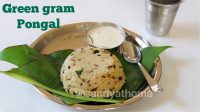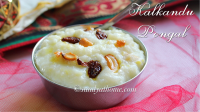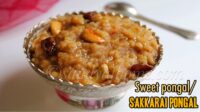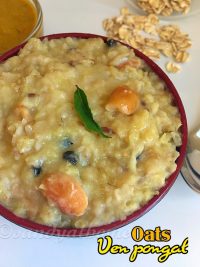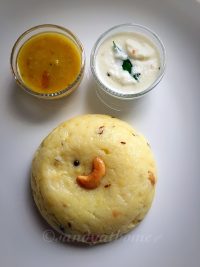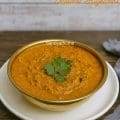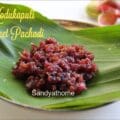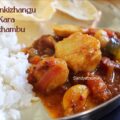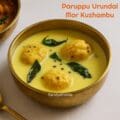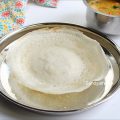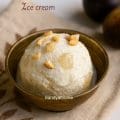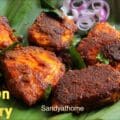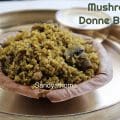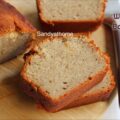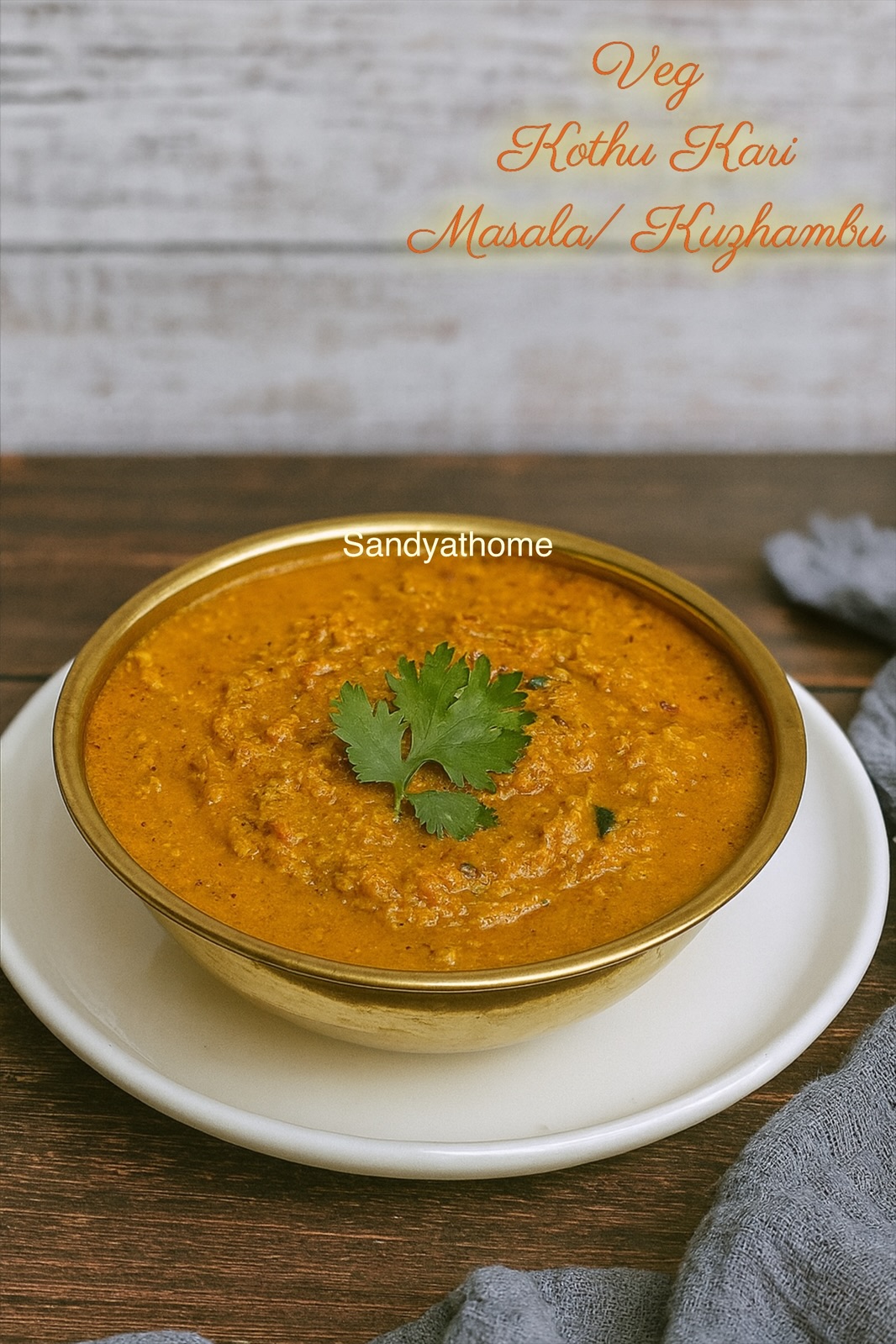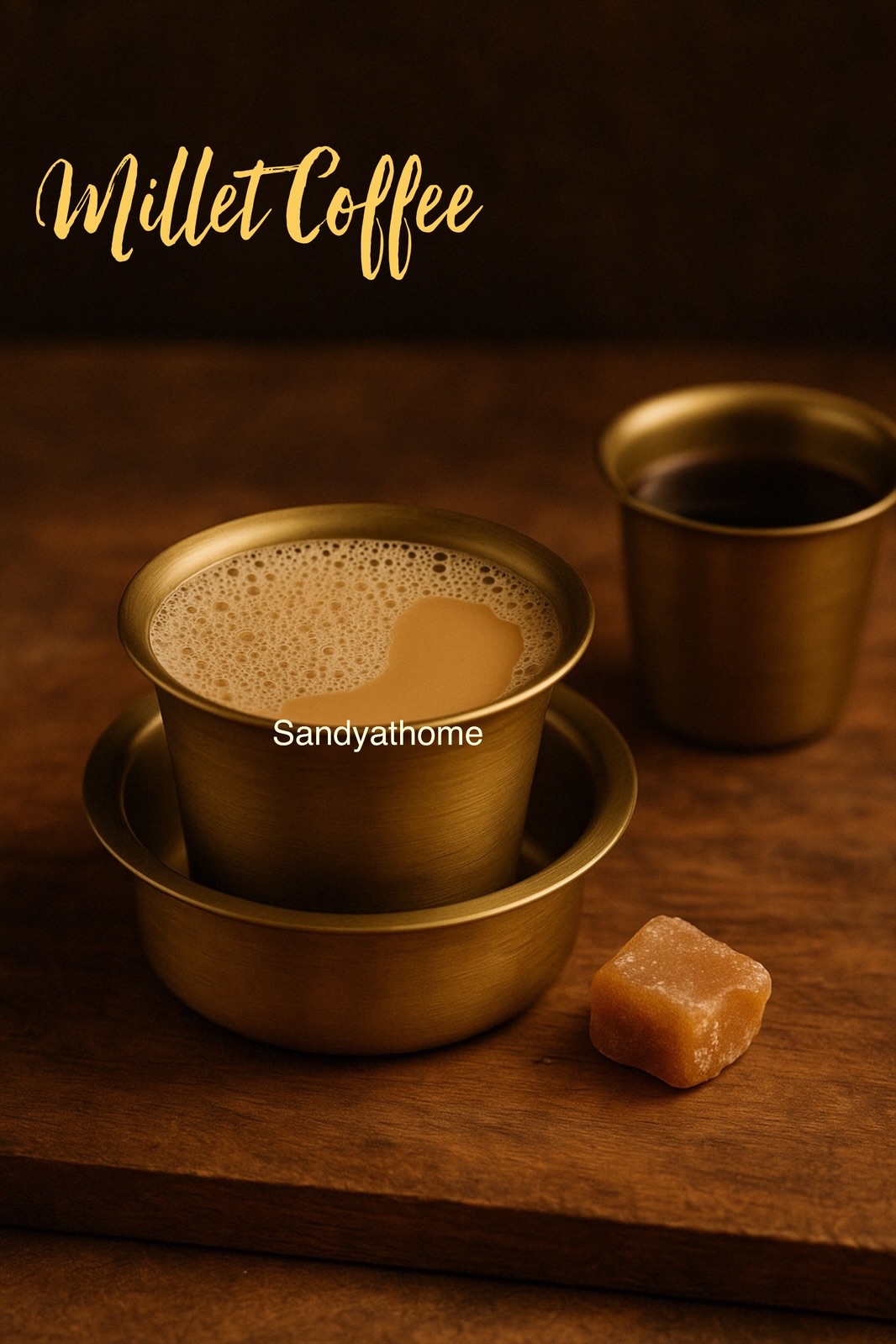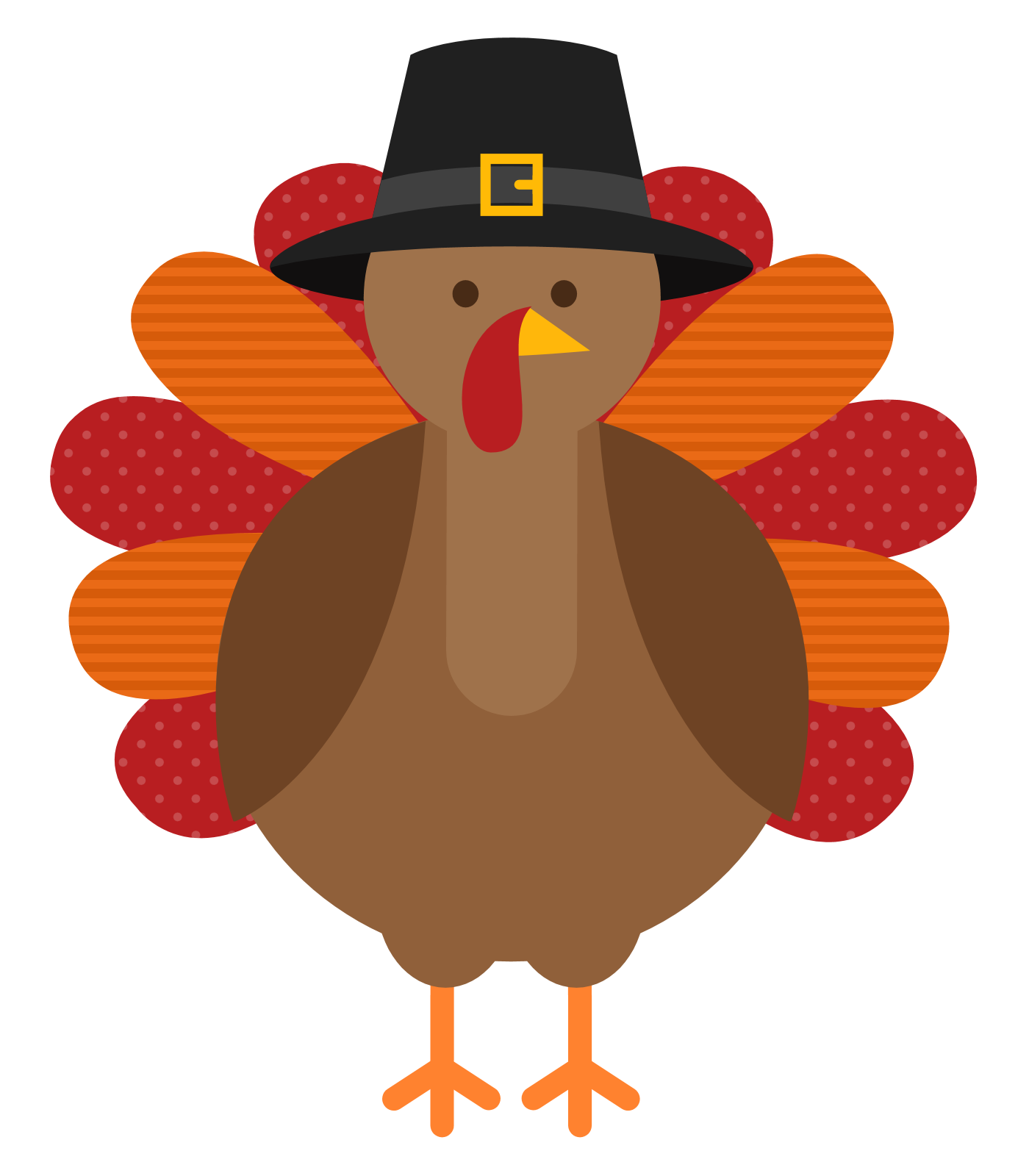Some dishes carry comfort in every spoonful, and for me, Rava Pongal is one of them. Unlike the classic ven pongal that takes a little more time, this version comes together in minutes — roasted rava blending with soft moong dal, tempered in ghee with pepper, cumin, and curry leaves. The result is a silky, buttery pongal that feels light yet so satisfying. It’s the kind of breakfast I reach for on busy mornings, when I still want a homemade meal that tastes special but doesn’t keep me in the kitchen for too long. Paired with coconut chutney, it’s South Indian comfort food at its simple best.
Bite of History – Rava Pongal
Pongal as a dish has ancient roots in South Indian kitchens, where it was originally made with rice and dal as an offering to the Sun God during harvest festivals. Over time, regional households began creating variations, substituting rice with millets or semolina to suit taste, time, and availability. Rava Pongal is believed to have gained popularity as a quicker alternative in temple kitchens and busy homes, where semolina was already a staple for upma. Today, it stands as a beloved modern classic — keeping the spirit of pongal intact, while adapting it for everyday cooking.
Jump to RecipeIngredient Roles in Rava Pongal
| Ingredient | Role in the Recipe |
|---|---|
| Rava / Sooji (Semolina) | Base ingredient, gives pongal its soft, grainy texture |
| Moong Dal (Yellow Split Dal) | Adds creaminess, protein, and earthy flavor |
| Water | Helps cook dal and rava to the right consistency |
| Ghee | Adds aroma, richness, prevents stickiness |
| Cashews | Provide crunch and nutty flavor |
| Black Pepper | Gives gentle spice and warmth |
| Cumin Seeds | Earthy flavor, aids digestion |
| Ginger | Adds freshness, mild heat, aids digestion |
| Curry Leaves | Infuse signature South Indian aroma |
| Green Chili (optional) | Adds an extra kick of spice |
| Salt | Enhances all flavors |
| Butter (optional) | Finishes pongal with glossy richness |
You May Also Like these Recipes:
Directions to make pongal with rava with step by step images
- Cook the Dal
Wash ½ cup moong dal and pressure cook with 1 ½ cups water until soft (2–3 whistles). Mash it lightly and keep aside.
- Tempering
Heat 2 tbsp ghee in the same pan. Add cashews, fry golden.
Add ginger, pepper, cumin, curry leaves, and green chili. Fry until fragrant. Add the rava and roast it well for 2 minutes. If using roasted rava roast it for few seconds.
- Cooking Pongal
To the rava mixture, add 2 ½ cups water + the cooked moong dal. Add salt to taste and mix well.
Cover and cook on low flame until the rava absorbs water and turns soft. Stir often to avoid lumps.
- Finishing Touch
Add 1–2 tbsp ghee and a dollop of butter on top.
Mix well until glossy and smooth.
Pro Tips for Perfect Rava Ven Pongal
- Roast the rava well: Light roasting until aromatic prevents lumps and stickiness.
- Mash the moong dal: Lightly mashing gives a creamy base that blends beautifully with rava.
- Use hot water for cooking rava: Adding roasted rava into hot water avoids clumping and keeps texture fluffy.
- Don’t skimp on ghee: Ghee is what makes pongal flavorful and glossy; adjust according to taste but don’t omit.
- Balance water and consistency: For soft, melt-in-the-mouth pongal use more water; for slightly grainy texture reduce a little.
- Crush pepper coarsely: Instead of whole peppercorns, use coarsely crushed pepper for even spice in every bite.
Serving Suggestions
- Serve Rava Pongal hot with coconut chutney — the classic South Indian combination.
- It also pairs wonderfully with sambar, tomato chutney, or gothsu.
- Add a drizzle of ghee on top before serving for extra flavor.
- For a festive breakfast spread, serve alongside medu vada, idli, and filter coffee.
FAQs – Rava Kara Pongal
A: Rava Pongal is made with roasted semolina (sooji) and moong dal, while Ven Pongal is made with rice and moong dal. Rava Pongal is quicker to cook and has a lighter, smoother texture.
A: You can cook the moong dal in an open pot until soft, then proceed with roasting rava and tempering. It takes a little longer but works just as well.
A: Yes, you can skip moong dal and make a plain sooji pongal, but dal adds creaminess and protein. Without dal, the texture will be closer to upma.
A: Roast the rava well, add it slowly into hot water while stirring continuously, and finish with ghee. These steps ensure soft, lump-free pongal.
A: Yes, Rava Pongal is soft, easy to digest, and lightly spiced, making it suitable for kids, elderly, and those looking for a wholesome yet gentle meal.
Chutney Recipes
Walnut Chutney, How to make Akhrot Chutney, No Coconut chutney
A smooth, creamy South Indian-style walnut chutney made without coconut or peanuts—perfect for hot summer days. Naturally cooling, rich in flavor, and ready in minutes!
Naval Pazham Chutney, How to make Jamun Chutney
Naval Pazham Chutney is a traditional Tamil chutney made with jamun fruit, coconut, and green chilli. Once made in village homes during peak summer, this chutney is now brought back as part of Sandyathome’s revival recipe series. Perfect with curd rice, dosa, or millet tiffin.
Karuppu Ulundhu Thogayal, How to make Black Urad Dal Thogayal
A forgotten Tamil thuvaiyal made with black urad dal, slow-roasted and ground to a coarse paste — this Karuppu Ulundhu Thogayal is a traditional strength recipe perfect for hot rice, ghee, and a soulful meal.
Vallarai keerai thuvaiyal, Brahmi chutney
Vallarai keerai thuvaiyal / Brahmi Chutney is a delicious side dish with lot of health benefits. This vallarai keerai thuvaiyal/ chutney is prepared with Brahmi leaves/ Vallarai keerai, onion, tomato,…
Ridge gourd chutney, Beerakaya pachadi
Ridge gourd chutney/ Peerkangai chutney/ Beerakaya pachadi is a yummy, spicy and slightly tangy chutney loaded with the goodness of Ridge gourd. This chutney/pachadi can be prepared in jiffy. It…
Carrot chutney recipe, Quick carrot chutney
Carrot chutney is a quick to make spicy, little sweet, slightly tangy, nutty flavored and most importantly yummy chutney with appetizing orange color which can be served along with Rotta …
Brinjal chutney recipe, Brinjal gojju chutney
Brinjal gojju chutney/ Brinjal chutney is a spicy, flavorful and little tangy side dish usually served along with Idli, dosa or hot rice. This brinjal chutney can be made very…
Hotel style coconut chutney recipe, Coconut chutney
Hotel style coconut chutney is a scrumptious and very easy to make side dish that can be prepared with handful ingredients. Yes regular coconut chutney recipe tweaked bit by adding…
Sorakaya pachadi recipe, Bottle gourd chutney
Bottle gourd chutney/ Sorakaya pachadi is a spicy, lightly tangy and delicious pachadi/ chutney that goes well with white rice, idli or dosa when served with little sesame oil. This…
Vadagam chutney, How to make vadagam chutney
Vadagam chutney is an easy and quick to make delicious chutney. Vadagam is a readymade sun dried seasoning. This chutney is prepared with vadagam, coconut and fried gram dal. Yes…
Mint thokku recipe, Pudina thokku
Mint thokku/ Pudina thokku is a spicy, tangy, salty and flavorful multipurpose dish/ side/ chutney that goes well with many main dishes like idli, dosa, rice etc. This thokku can…
Dry garlic chutney recipe, Vada pav chutney recipe
Dry garlic chutney / Vada pav chutney is a spicy and very flavorful powder that is used in making vada pav. This particular chutney/ powder makes the vada pav extremely…
Roasted chana dal chutney, Pottukadalai chutney
Fried gram dal chutney/ Roasted gram dal chutney/ Pottukadalai chutney is quick and easy to make chutney usually prepared during festivals for breakfast. This chutney is served with raw rice…
Vada curry recipe, Side dish for idli dosa
Vada curry is a delicious south Indian thick gravy made with leftover masala vada. Vada curry is a very flavorful and aromatic coconut based curry usually served along with idli…
Ridge gourd peel chutney, Peerkangai chutney recipe
Ridge gourd peel chutney/ Peerkangai chutney/ Beerakaya chutney might sound a little different but it is one of the tastiest chutney I have learnt from my mom. This post is…
Tamarind chutney, Sonth chutney recipe
Tamarind chutney/ Sonth chutney/ Saunth chutney is a classic sweet and tangy side accompany for many snacks also used in chaat items. This chutney is made by grinding soaked tamarind…
Mysore chutney recipe, Spicy red chutney, Chana dal chutney
Mysore chutney/ Spicy red chutney/ Chana dal chutney is a traditional spicy chutney made while preparing regular or mysore masala dosa at my home. Mysore chutney is prepared with bengal…
Peanut chutney recipe, Groundnut chutney
Peanut chutney is a mild spicy, garlicky, little tangy and flavorful chutney prepared in a very simple and quick way with very few ingredients and served with idli and dosa….
Green chilli chutney recipe, Chutney recipes
Green chilli chutney is a super spicy chutney prepared in reverse method, yes the green chilli is first ground into paste then tempered and cooked. My mom usually prepares this…
Cabbage chutney recipe, Muttaikose chutney recipe
Cabbage chutney is a spicy and yummy tasting chutney prepared by grinding sauteed cabbage, dal, red chili and tamarind. Cabbage chutney though different from the regular chutney in taste its…
Red chilli coconut chutney recipe
Red chilli coconut chutney is a spicy side dish served with various main dishes. It is prepared by grinding coconut and red chilli with other ingredients to enhance the flavors…
Capsicum chutney, How to make capsicum chutney
Capsicum chutney is a spicy and tangy chutney with cilantro flavor is prepared by grinding sauteed onion, tomato, capsicum and cilantro into paste. This chutney has very appetizing color and…
Tomato chutney, Thakkali chutney recipe, How to make tomato chutney
This is a tangy and spicy chutney prepared in reverse procedure. The grinding takes place first then the tempering. The riper the tomatoes and more quantity of red chili yields…
Coconut chutney recipe, How to make coconut chutney
A traditional chutney of South India which serves as side dish for most varieties of breakfast. This is a simple and quick chutney made with coconut and can be prepared…
Onion tomato chutney recipe, Chutney recipes
Onion tomato chutney is a spicy recipe prepared grinding sauteed onion, tomato and dried chili into fine paste and tempered. I usually make this chutney as side accompany for rotta…
Mint chutney recipe, How to make tomato pudina chutney
Fresh, vibrant, and naturally cooling — this mint/ pudina chutney with a hint of tomato is a soulful South Indian side made from homegrown mint leaves and juicy tomatoes.
Onion chutney recipe, How to make vengaya chutney
I learnt this simple, spicy and yummy tasting chutney from my MIL and i make this chutney as side accompany when i don’t have enough time to make anything with…
Pongal Recipes
Millet sweet pongal (Thinai sakkarai pongal)
Millet sakkarai pongal prepared with foxtail millet/ thinai, moong dal, jaggery, flavored with cardamom and…
Varagu arisi pongal recipe, Kodo millet pongal
Varagu arisi pongal/ Kodo Millet khara pongal is one of the popular South Indian breakfast….
Sakkarai pongal with condensed milk, Sweet pongal
Sakkarai pongal with condensed milk/ Sweet pongal with condensed milk is a delicious and very…
Varagu arisi sakkarai pongal, Millet sakkarai pongal
Varagu arisi sakkarai pongal/ Kodo millet sakkarai pongal prepared with kodo millet, moong dal, jaggery,…
Instant pot quinoa pongal, Instant pot Indian recipes
Quinoa pongal is a replica of classic South Indian breakfast ven pongal/ khara pongal prepared…
Broken wheat sweet pongal, Sakkarai pongal recipe
Wheat rava/ Cracked wheat/ dalia/ Broken wheat/ Godhumai rava called with any name is a…
Green gram pongal recipe, How to make pongal
Green gram pongal is a khara pongal/ venpongal made with rice, moong dal and green…
Kalkandu pongal recipe, Kalkandu Sadam, Sweet pongal
Kalkandu pongal is one such variety of sweet pongal made with rice, moong dal and…
Sweet pongal recipe, Sakkarai pongal, Chakkara pongali
Sakkarai pongal/ Sweet pongal/ Chakkara pongali is a delicious sweet recipe popularly prepared in South…
Oats ven pongal recipe, How to make oats pongal
Oats ven pongal is a simple, healthy and easy to make recipe which can be…
Ven pongal recipe, How to make ven pongal
A delicious recipe made with rice and moong dal can never be left out in…
